We spent one week in La Rioja, and here are 15 of the best wineries to visit in the Rioja wine region, from the best underground cellars to the most creative vineyards.
La Rioja is one of Spain’s most famous wine regions. Tucked away in northeastern Spain, tempranillo and Garnacha grapes grow on the rolling hillsides of this beautiful wine region.
There are over 500 wineries in La Rioja, ranging from small, boutique vineyards to some of the biggest names in Spanish wine.
Over the years, Tim and I have become quite the wine enthusiasts. We’ve visited wine regions in Portugal, France, Italy, Australia, New Zealand, Argentina, and more. Wine from the Rioja region is my personal favorite, which is why on our most recent trip to Spain, we dedicated a full week here.
We visited many wineries in the Rioja wine region. This guide lists 15 wineries, which is quite a lot to choose from, so at the end, I share our five favorites. The main thing we learned is that, even on the shortest visits, it’s well worth touring an underground cellar and doing a tasting or two at two to three other wineries that interest you.
Even if you don’t consider yourself a wine aficionado, this part of Spain is well worth the visit. The landscapes are beautiful, the small towns are a delight to explore, and the food and wine is some of the best in Spain.
Best Wineries in the Rioja Wine Region
In this section, we list 15 wineries in the Rioja wine region. That’s a lot to choose from, especially if you are just planning a day or two in the area, so later in this guide, we narrow down the long list to a few recommendations.
These wineries are listed geographically, starting in the west, in Haro, and moving east, to Logroño.
We have some great places to share with you, from big names in Rioja wine to smaller wineries that are pushing the boundaries on traditional Rioja wine.
How to Use This Map: Click the icons on the map to get more information about each point of interest. To take this map with you, click the star next to the title of the map which adds it to your Google account. Next, within your Google Maps app, select ‘Saved’ and then select ‘Maps’. This map title will now appear in your list.
1. Bodegas Muga
WHY VISIT BODEGAS MUGA: To visit one of the most popular wineries in the Rioja wine region.
Let’s get started with one of the most popular wineries in the Rioja wine region, Bodegas Muga.
This winery, along with the next five on this list, are all located in Haro. With one day in Haro, you could visit four to six of these wineries, making Haro one of the most convenient places in the Rioja wine region to do wine tastings.
Bodegas Muga exports wine around the world, making it one of the most recognizable names on this list of wineries. Both its wine, and ithe winery, frequently wins awards.
On a visit here, visitors can do a tasting at the wine bar or sit outside on the terrace and order glasses of wine and tapas. A reservation was not necessary to visit the wine bar or terrace in our visit in 2024.
This was one of the busiest wineries we visited in Rioja. We love their wine (we drink it a lot at home), but it was one of our least favorite experiences, as the winery was very crowded and we had very limited time with the sommeliers, as they had to keep the groups moving on the wine tastings.
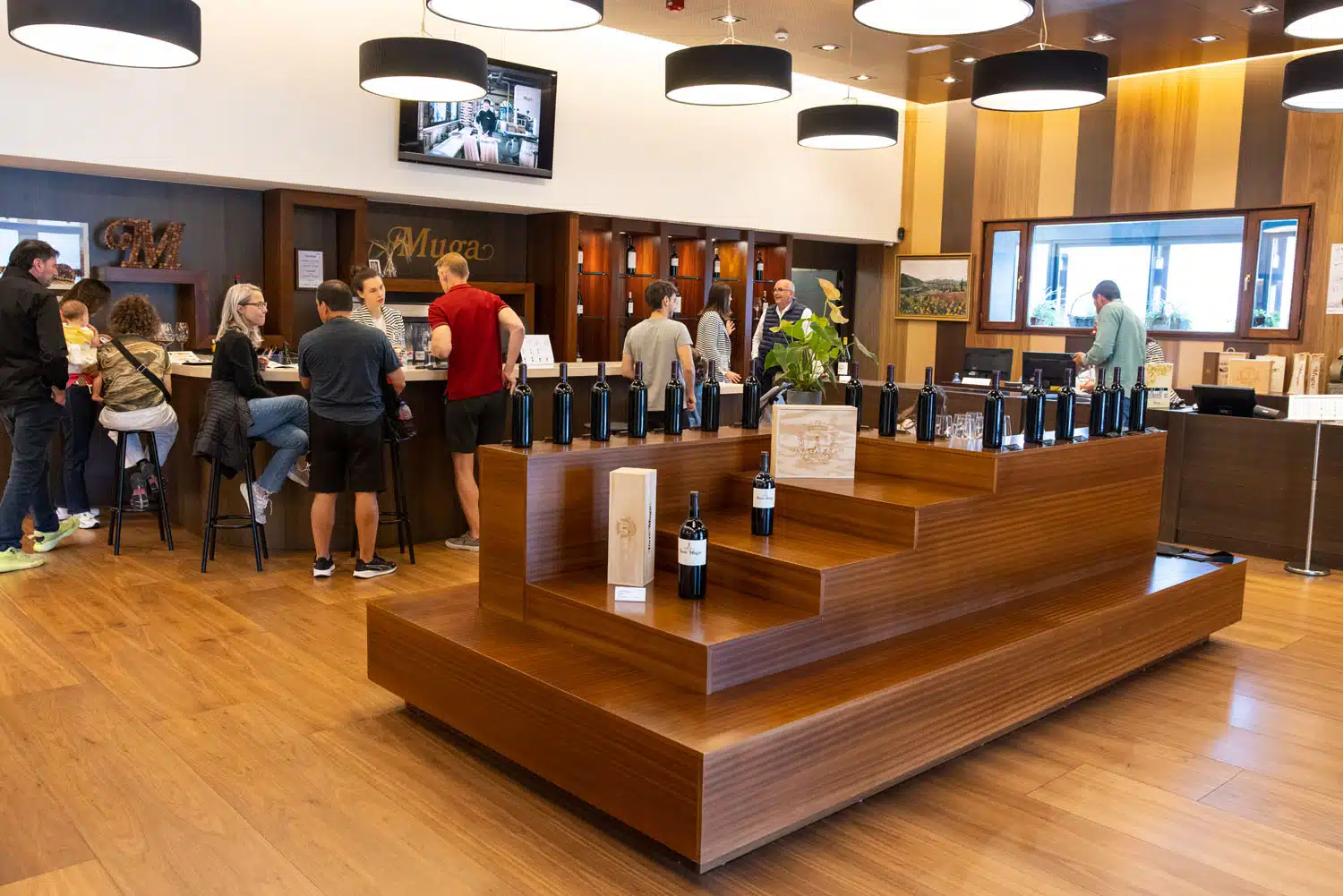
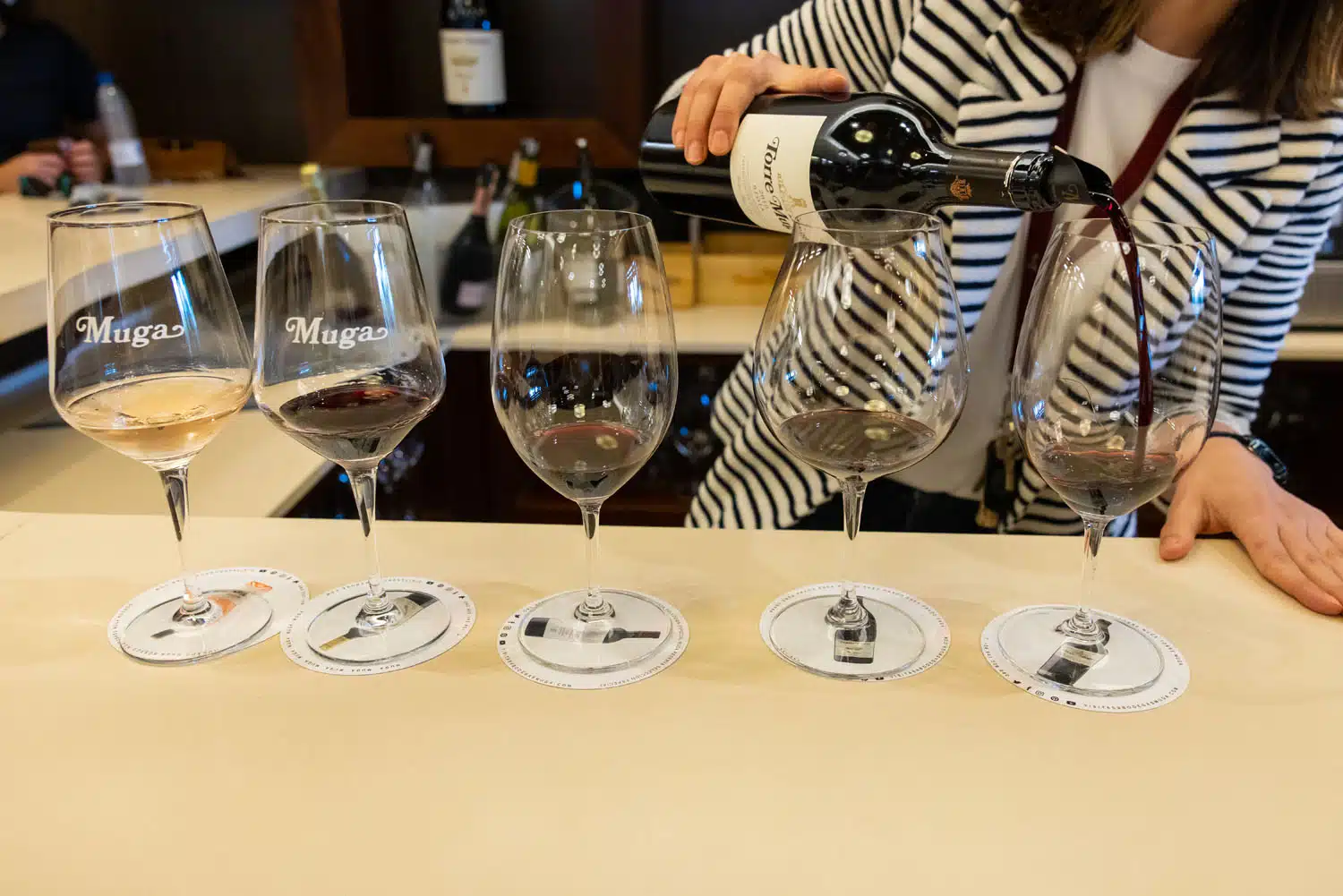
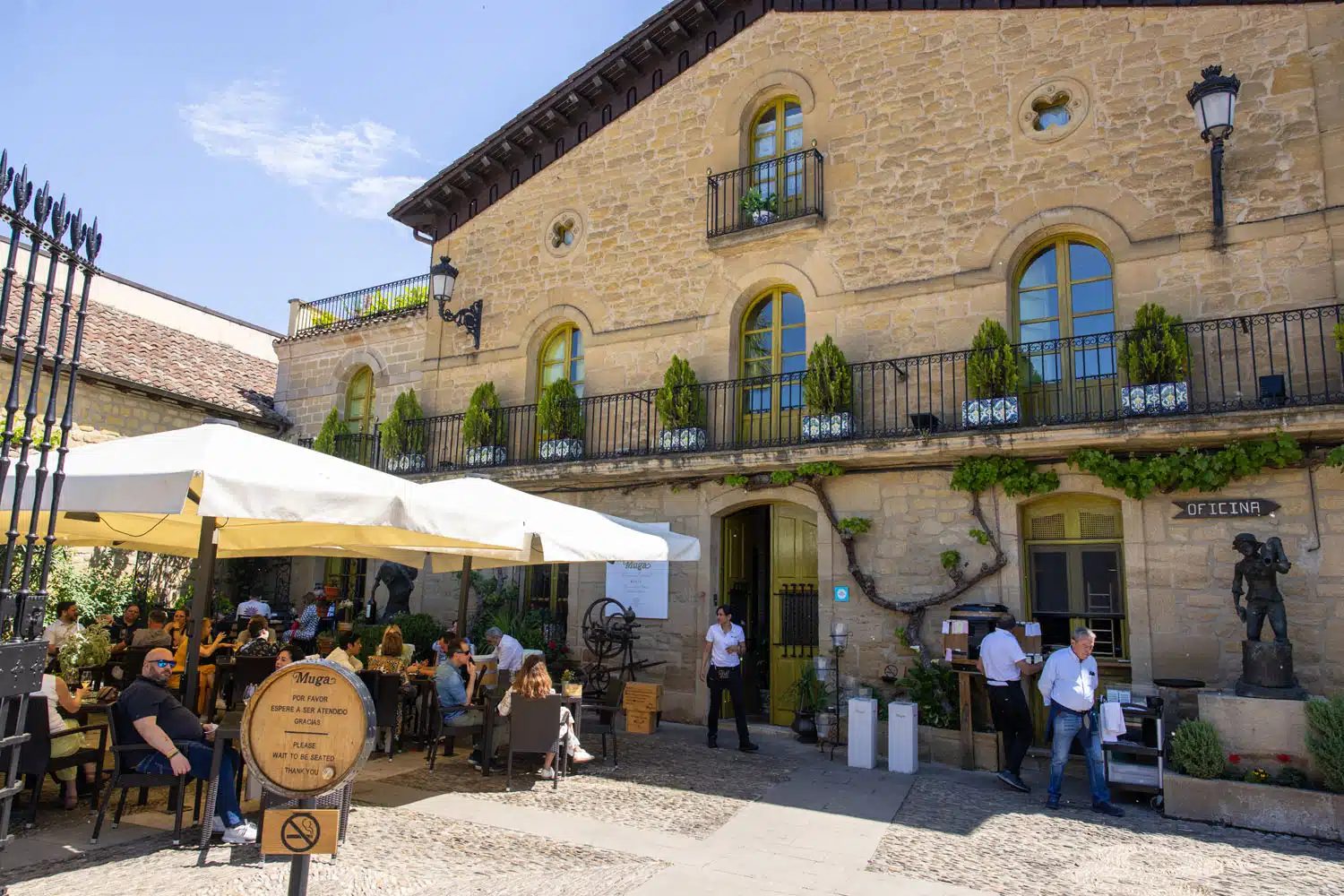
Outdoor seating at Bodegas Muga
PRO TRAVEL TIP: Most wineries are not open every day of the week (some close on Sunday or Monday) or have very limited hours several days of the week. Check the hours of operation for each winery you plan to visit before your trip. We provide the link to each winery throughout this guide.
2. Bodegas Gómez Cruzado
WHY VISIT BODEGAS GÓMEZ CRUZADO: For an in-depth wine tasting at a boutique winery. This is our favorite winery in Haro.
This is our favorite winery in Haro and one of our favorite experiences in the Rioja wine region.
This boutique winery was founded in 1886. They produce wine using traditional winemaking methods and everything we tasted was outstanding.
At Bodegas Gómez Cruzado, there is an indoor and outdoor wine bar.
We took our seats inside, in stone building filled with wine barrels. Our sommelier took us through a very long tasting of young red and white wines to those that were much older. For each wine, should told us a bit about its history and its tasting notes. We tasted some olive oil, as well.
The sommelier’s personalized attention, combined with tasting some of the finest wines we had in Rioja, made this one of our most memorable experiences.
A reservation is not necessary. On a visit here, you can opt for a wine tasting or simply order a glass of wine. They offer a variety of tasting options and have a few appetizers, as well.
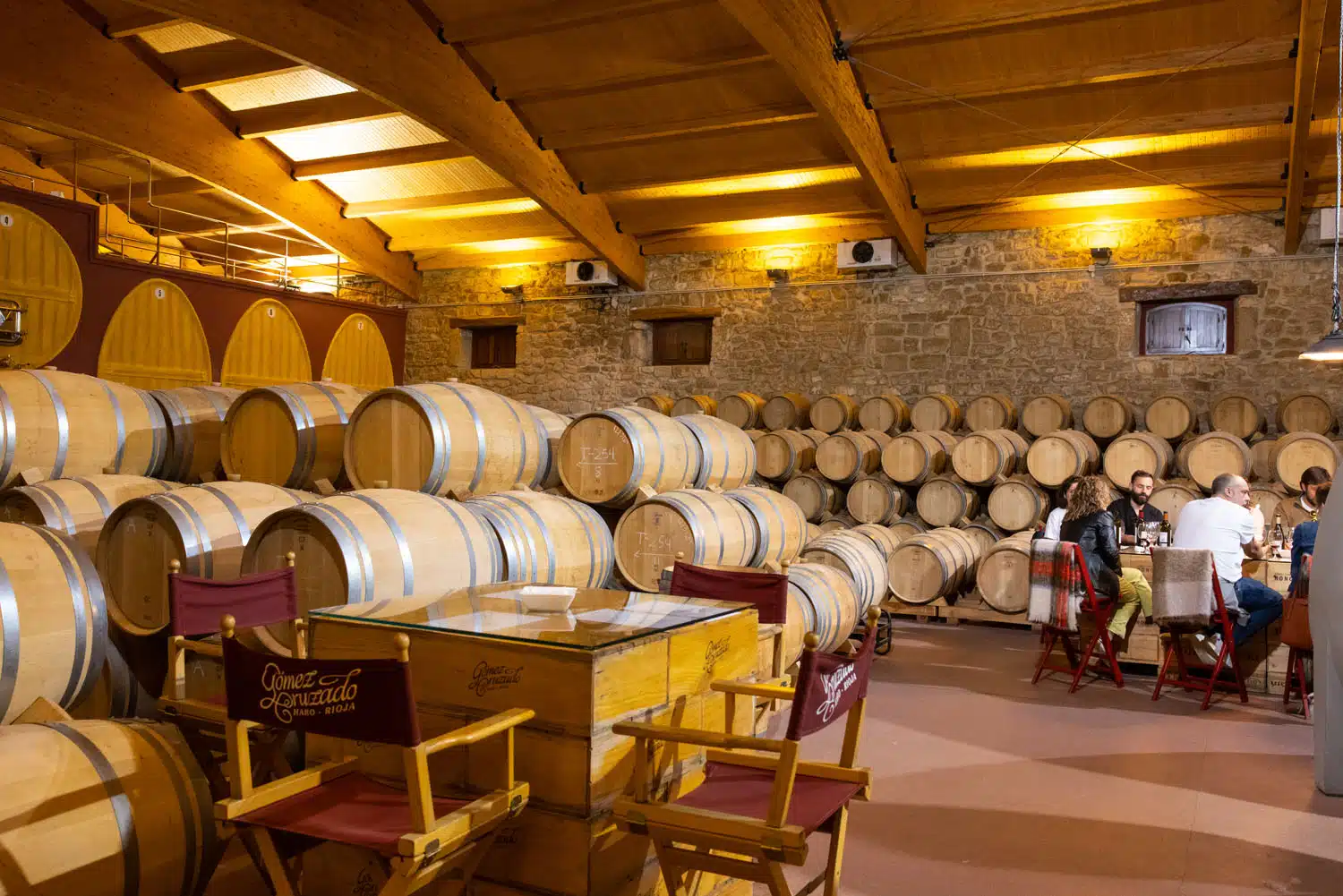
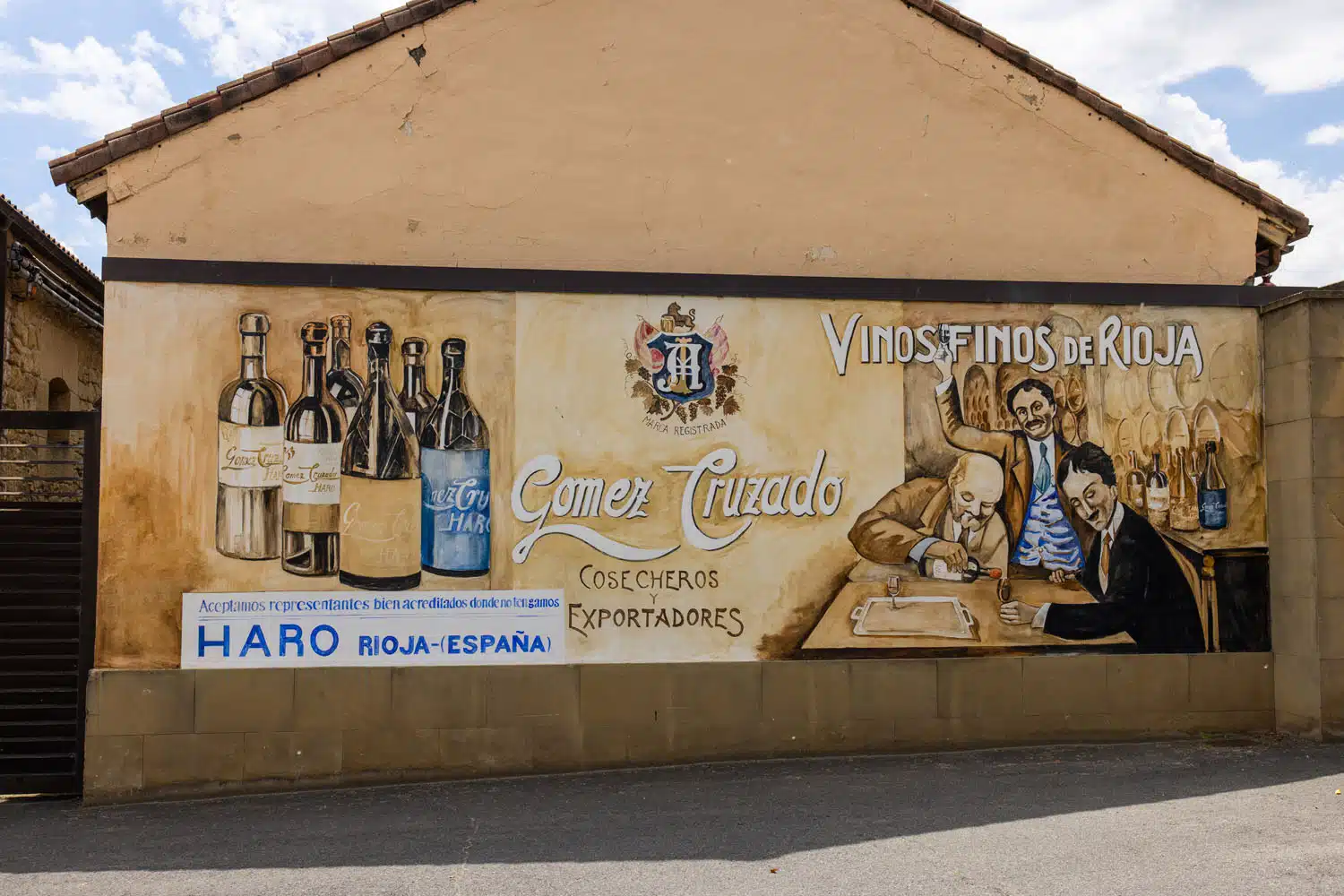
3. Viña Tondonia
R. López de Heredia – Viña Tondonia is another big name in Rioja wine. We frequently saw it on menus throughout our time in Spain and it’s available at many stores in the USA.
They make great wine but the winery is skippable, in our opinion, since they do not offer wine tastings. However, they do have a shop so you can purchase a bottle to enjoy later in the day or bring home as a souvenir. The shop has limited hours and is not open every day, so check their hours in advance.
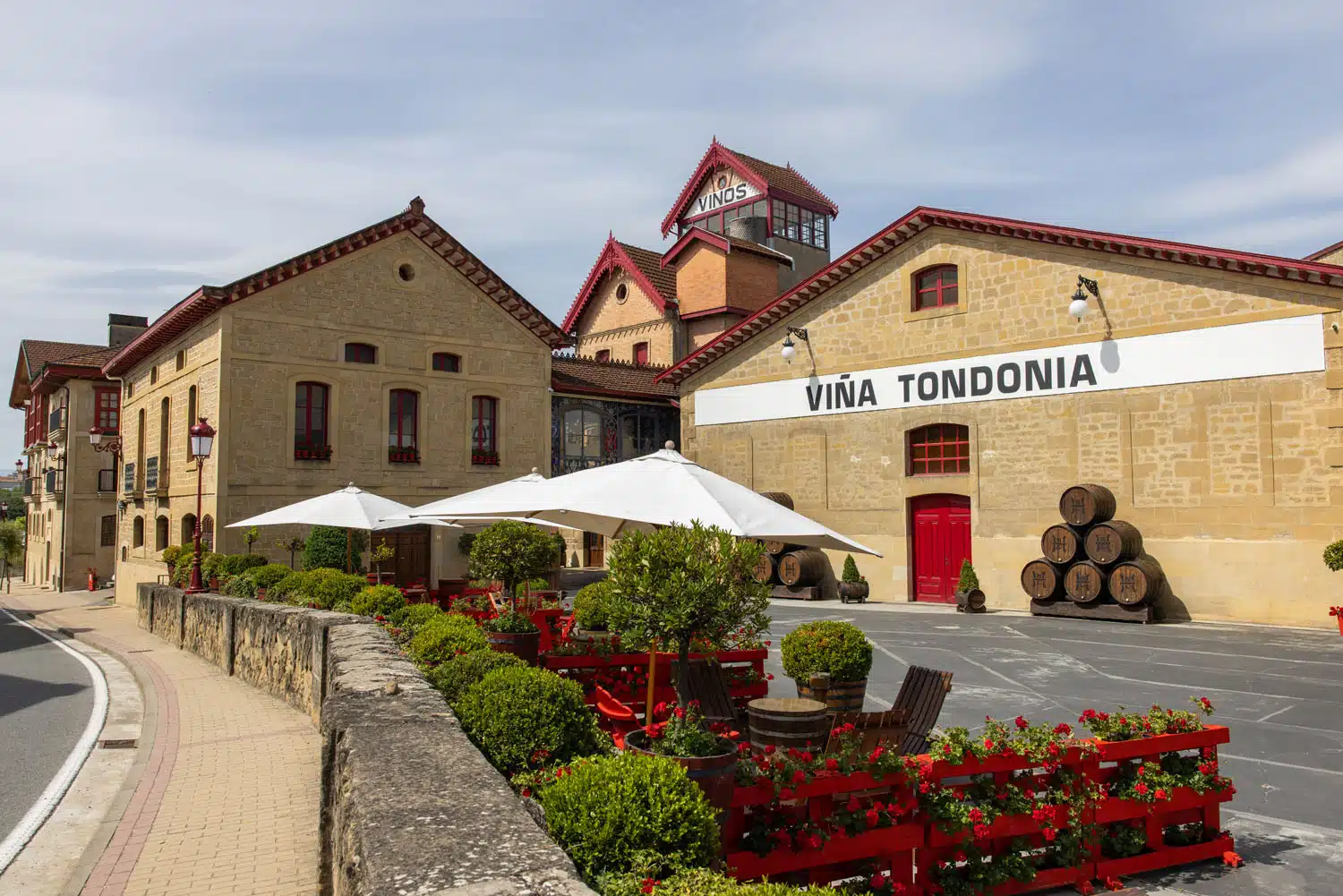
Viña Tondonia
4. Bodegas La Rioja Alta, S.A.
WHY VISIT BODEGAS LA RIOJA ALTA S.A.: To visit one of the prettiest wineries in Haro. It has a lovely outdoor setting and a very well stocked shop, filled with wine and other souvenirs.
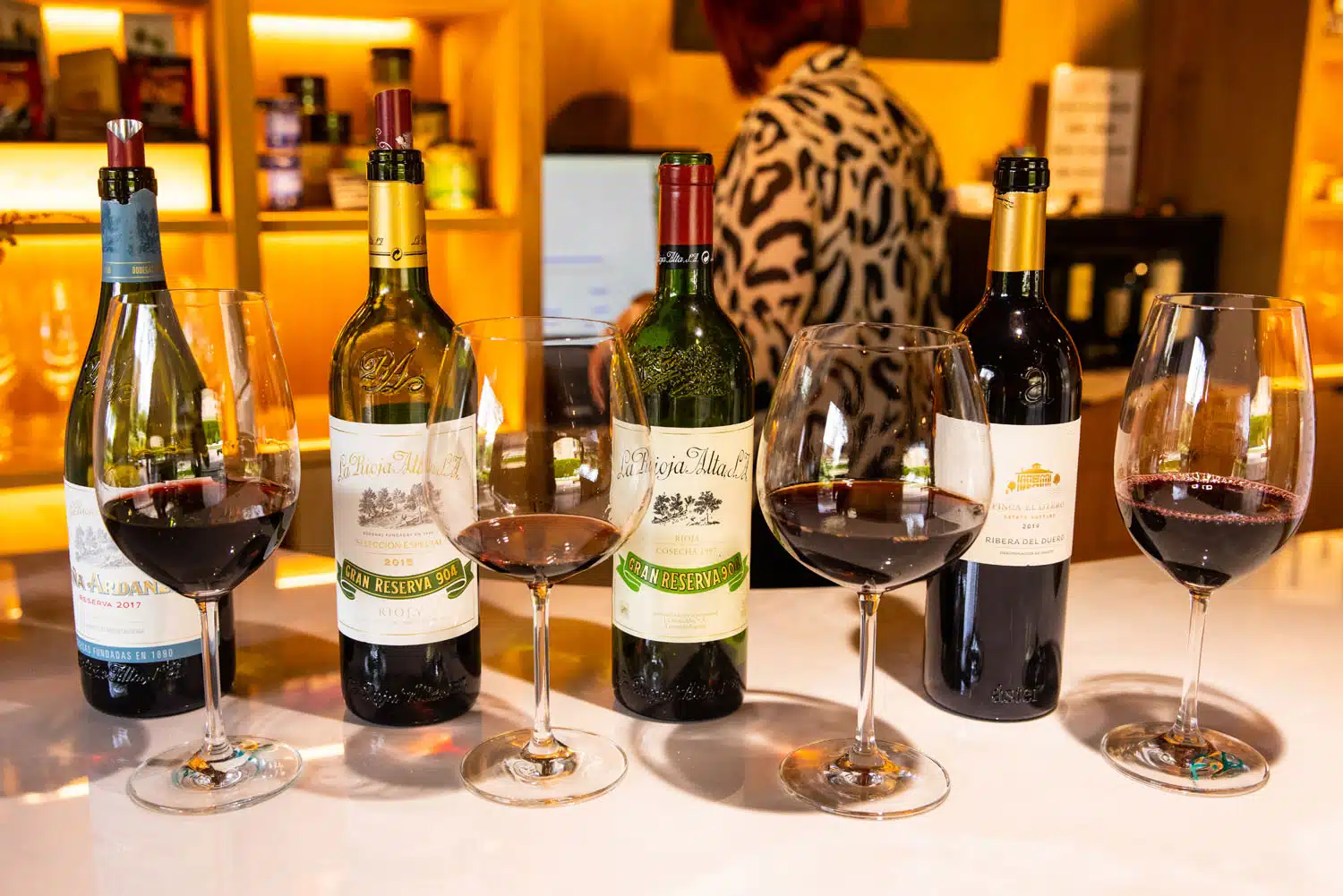
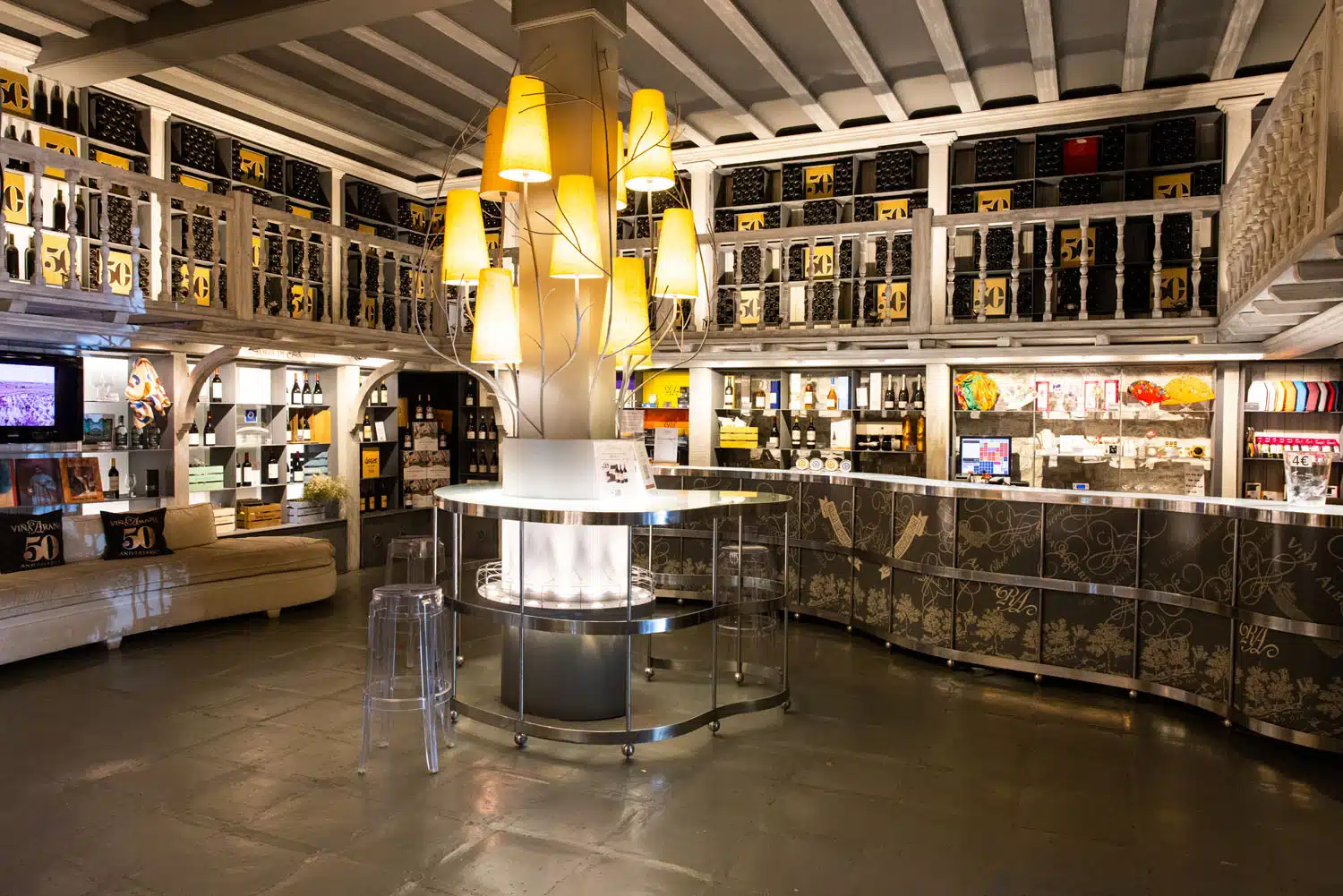
Bodegas La Rioja Alta is also located in Haro, just steps away from Viña Tondonia and Bodegas Gómez Cruzado. It is a lovely winery to visit, with an outdoor terrace in a gardenlike setting.
Bodegas La Rioja Alta produces a lot of wine, some of it in other wine regions across Spain. Their gift shop is one of the largest we saw, and in here you can purchase wine both from the Rioja wine region as well as Ribera del Duero and Rias Baixas.
If you are in Haro and want to take a guided tour, this is a great place to do it. Bodegas La Rioja Alta offers a tour of their winery most days of the week (typically from Monday through Saturday).
We did a wine tasting at the wine bar, no reservation was necessary. This was a very nice experience, as the sommelier fit our tasting to our preferences. It was casual, informative, and friendly. We purchased a glass of our favorite wine and shared it on the outdoor terrace, which rounded out the entire experience.
5. Bodegas Roda
WHY VISIT BODEGAS RODA: This boutique winery produces several fantastic wines. They offer a few unique tours that you can’t get in other wineries in the Rioja wine region.
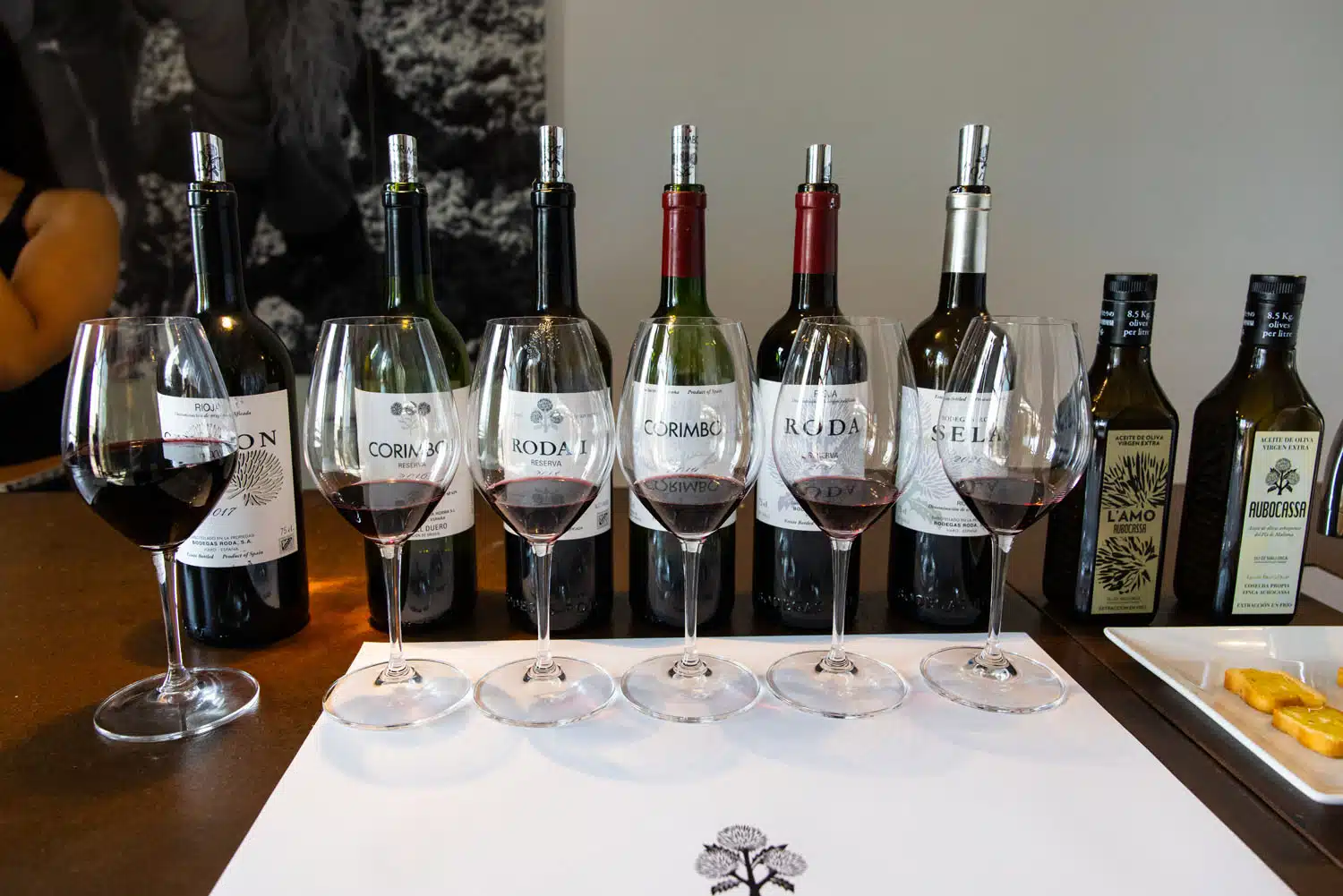
Bodegas Roda is a small, boutique winery in Haro. They offer tastings at the wine bar (no reservation necessary) as well as a long list of tours.
Since we had tours lined up at several other wineries in the Rioja wine region, we elected to just do a wine tasting at Roda. The wine bar is tiny, just a small, bare room with a very small wine bar. However, our sommelier was fantastic, as she led our tasting of their wines. The wine is very, very good and we did purchase some to take home.
Even though we did not do this, I think taking a tour here would be worthwhile. I recommend taking a look at their website, to see the tours that are offered. At the time that I am writing this, they offer several unique tours, including a vertical tasting of their wines and a tour that allows you to sample wines from both Rioja and Ribera del Duero.
6. CVNE
WHY VISIT CVNE: To visit the wine cellar designed by Gustave Eiffel and to see the wine cemetery.
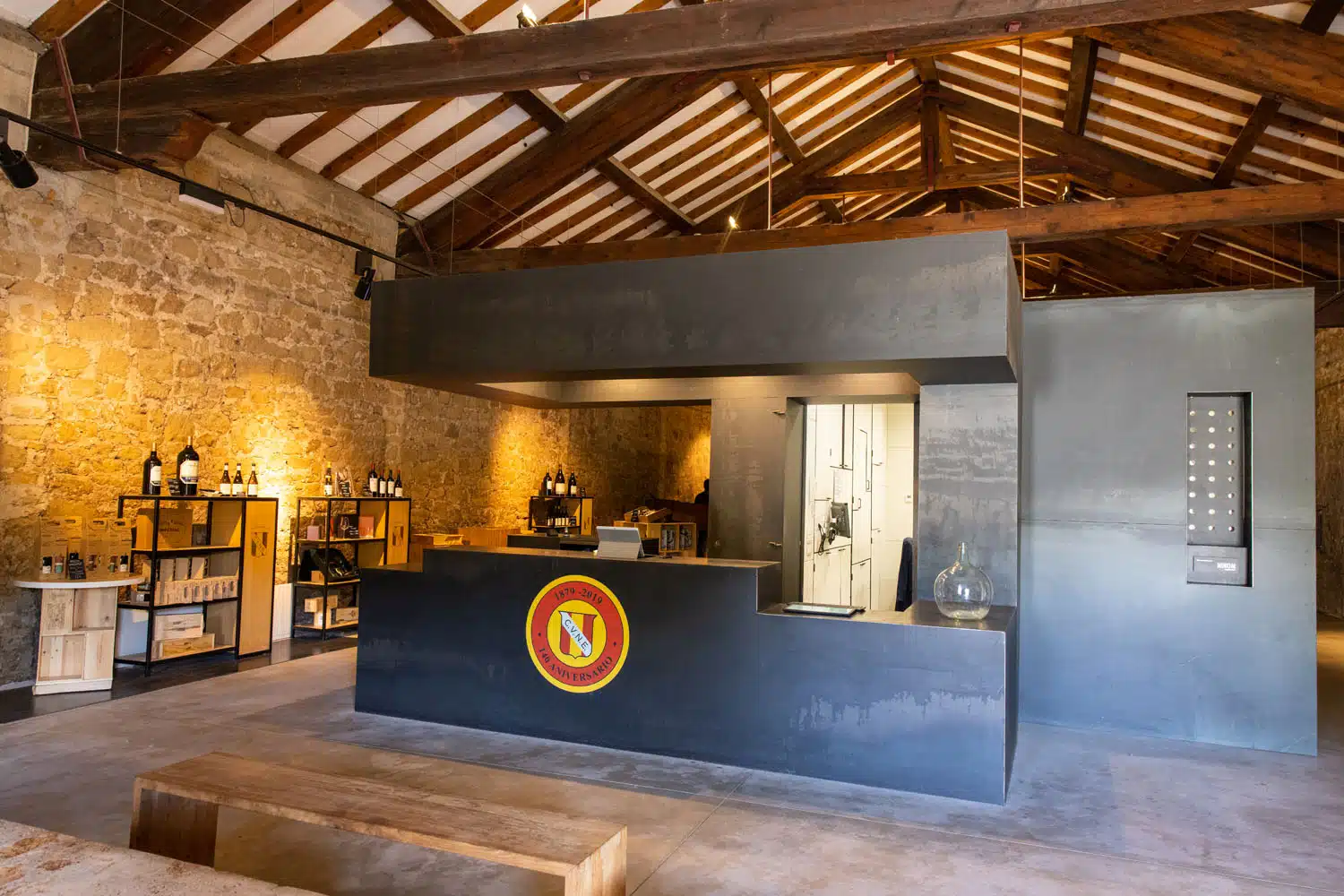
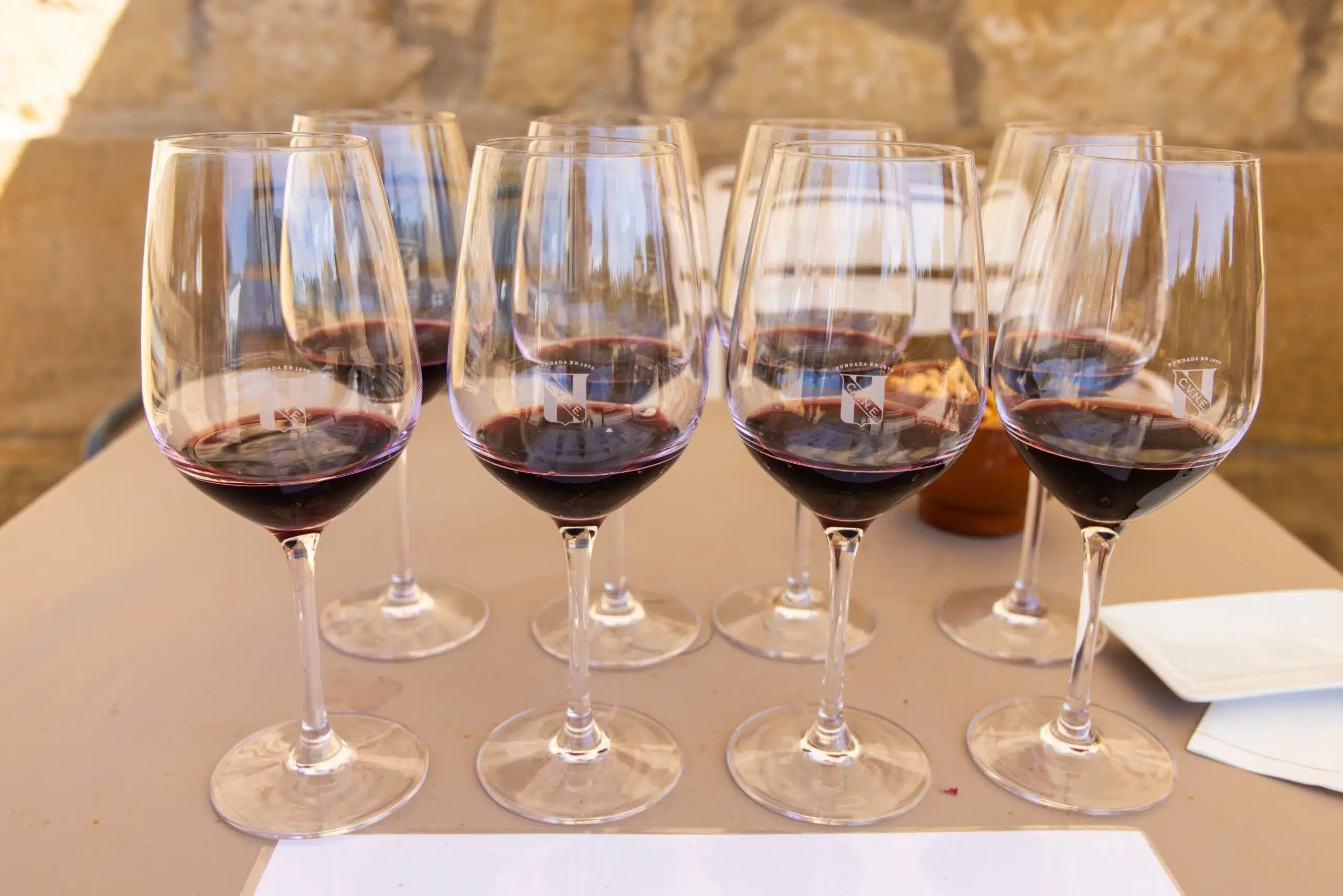
CVNE is a very old winery, with more than 140 years in the winemaking business. They have several different locations but their winery in Haro is one of the most interesting to visit.
The highlight here is to take a tour of the winery, to visit the wine cellar designed by Gustave Eiffel and to see the ‘wine cemetery,’ where 100+ year old wines are covered with mold dating back to the 1800s.
We just did a wine tasting here, which wasn’t very memorable, but on a return visit to Rioja, a tour of their cellar would be at the top of our list.
7. Bodegas Conde de los Andes
WHY VISIT BODEGAS CONDE DE LOS ANDES: To visit the largest network of underground cellars in the Rioja wine region and to walk in the footsteps of Ernest Hemingway.
In the middle ages, underground cellars were created throughout the Rioja wine region. These cellars were used to age and store wine (and they continue to do so today). At Bodegas Condes de los Andes, there are over 1 kilometer of underground cellars, making this the largest underground network in La Rioja.
On a tour here, you get to walk these historic tunnels, which are lined with thousands of bottles of wine, some dating back to the late 1800s. This winery has also been visited by Ernest Hemingway, who walked these tunnels and tasted the wine.
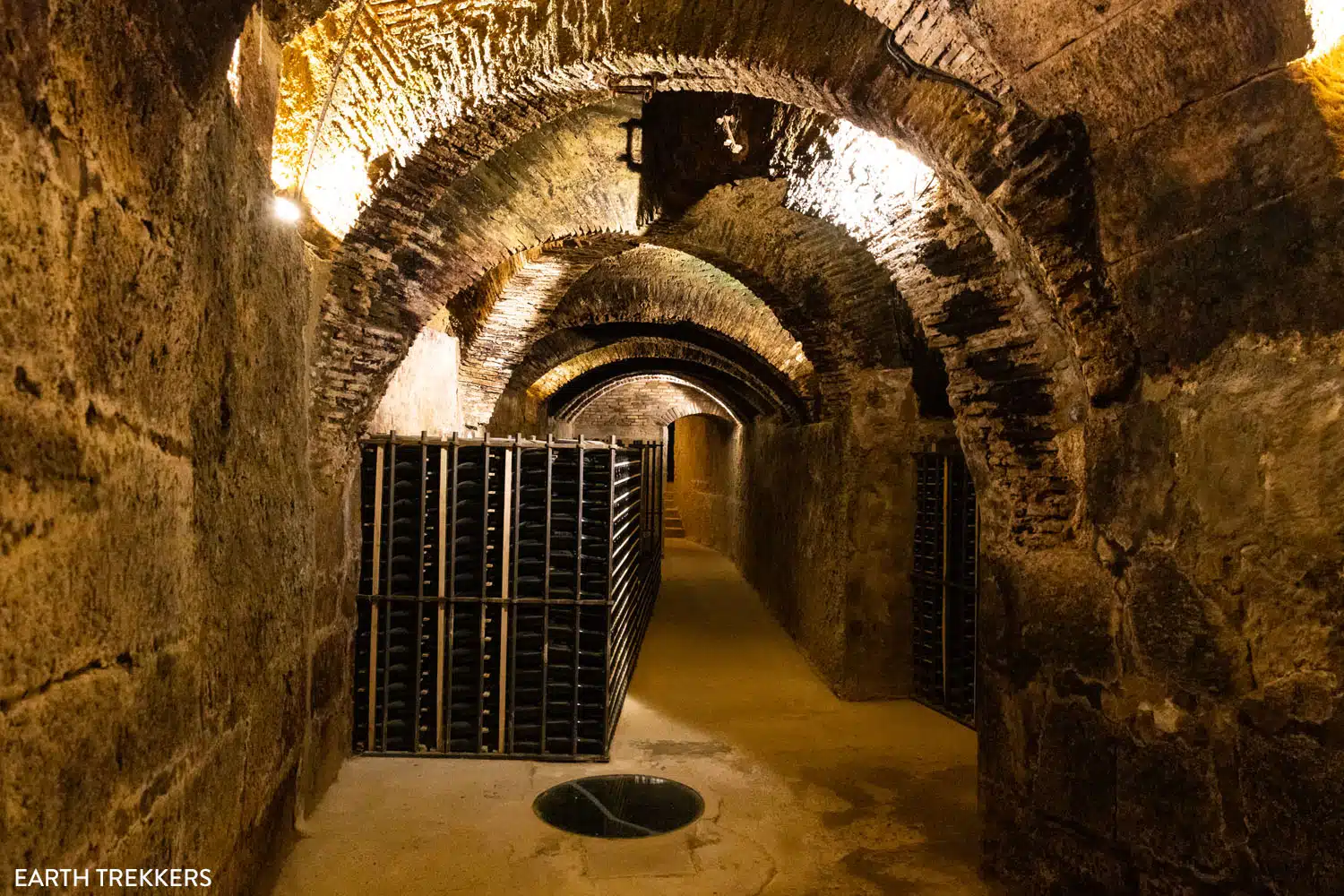
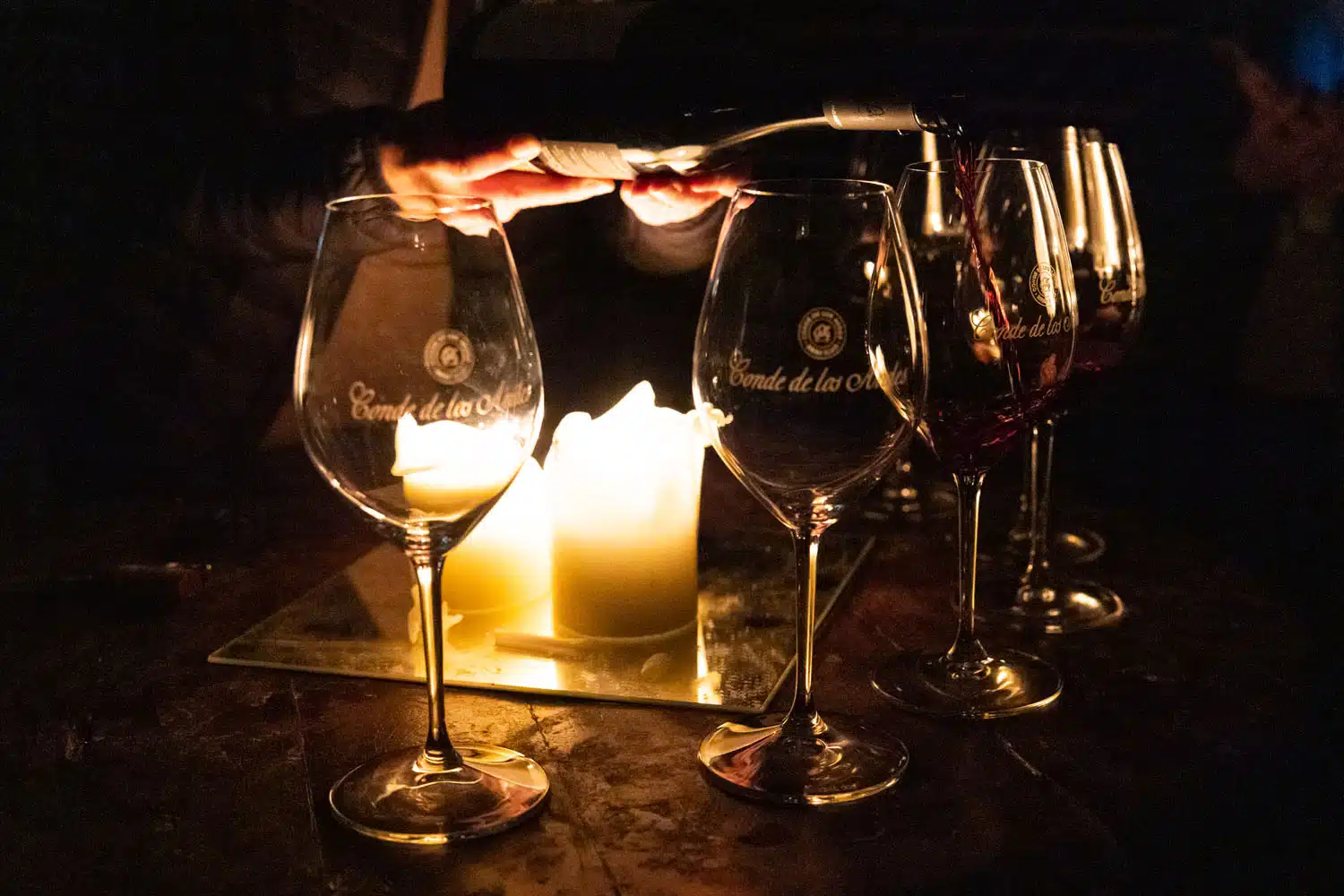
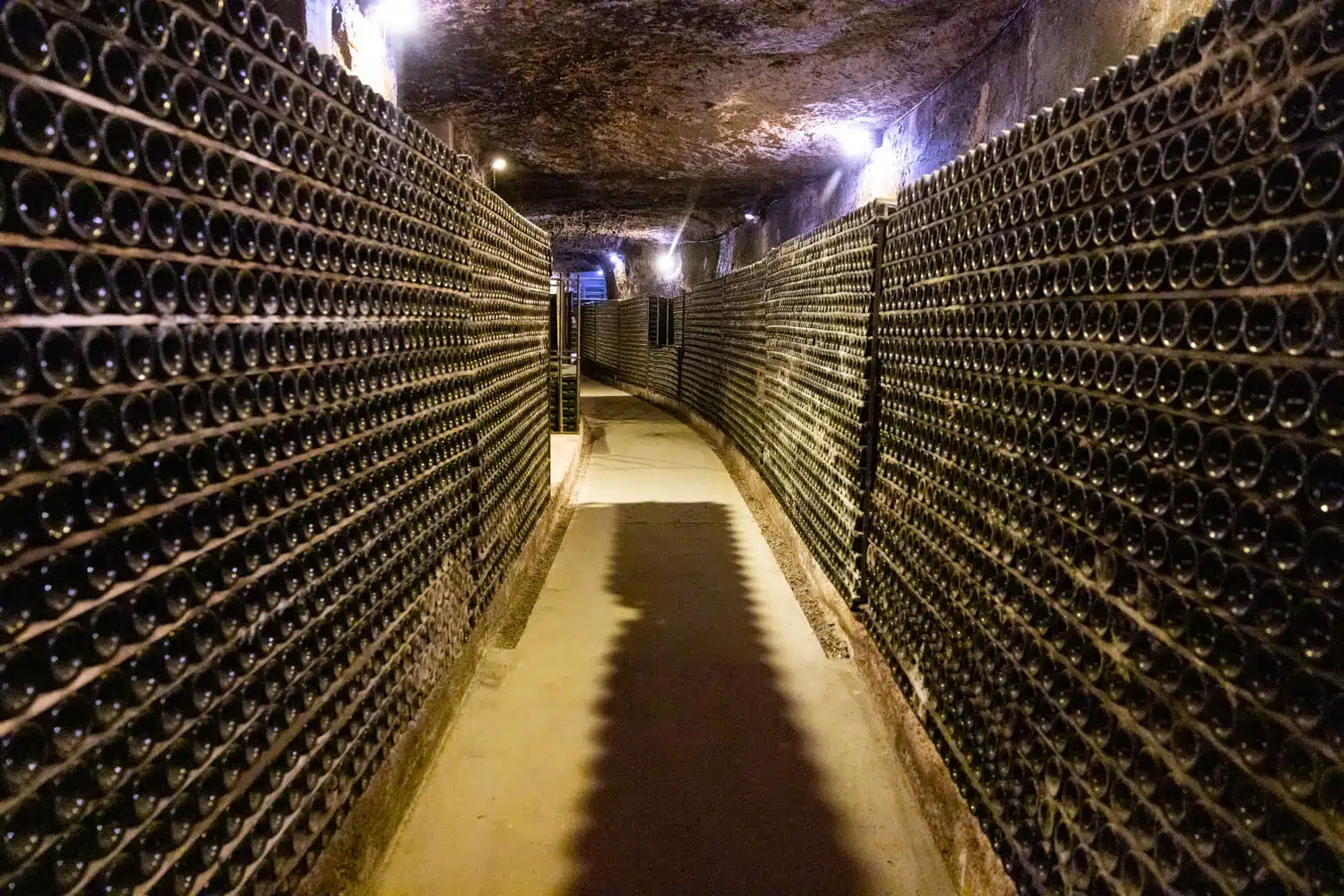
Bodegas Conde de los Andes only offers guided tours. They do not have a wine bar that is open for tastings. This is one of the most unique and most interesting tours that we took in the Rioja wine region and we highly recommend it. The tour ends with a tasting of their wines.
Bodegas Conde de los Andes is located in Ollauri, a small town south of Haro.
8. Bodegas Lecea
WHY VISIT BODEGAS LECEA: To learn about the history of winemaking in Rioja and to visit the historic cave cellars in San Asensio.
We loved our visit to this small, family run winery. Located in San Asensio, this historic neighborhood is home to 300+ cave cellars that date back to the 16th century. Bodegas Lecea has four of these cave cellars.
On a visit here, you can take a guided tour of the winery, visit the historic wine cellars, and learn about the traditional winemaking methods in the Rioja wine region. This is a fantastic look into the history of winemaking in Rioja and the traditional methods that are still used today.
We found our visit here to be one of the most informative about the history of winemaking in Rioja. To see the wine cellars and the room where the traditional foot stomping of the grapes still occurs is very interesting. The tour ends in the tasting room with a tasting of three of their wines.
Bodegas Lecea offers a variety of tours, with options to have lunch in the vineyard or to take an electric bike tour of the vineyard.
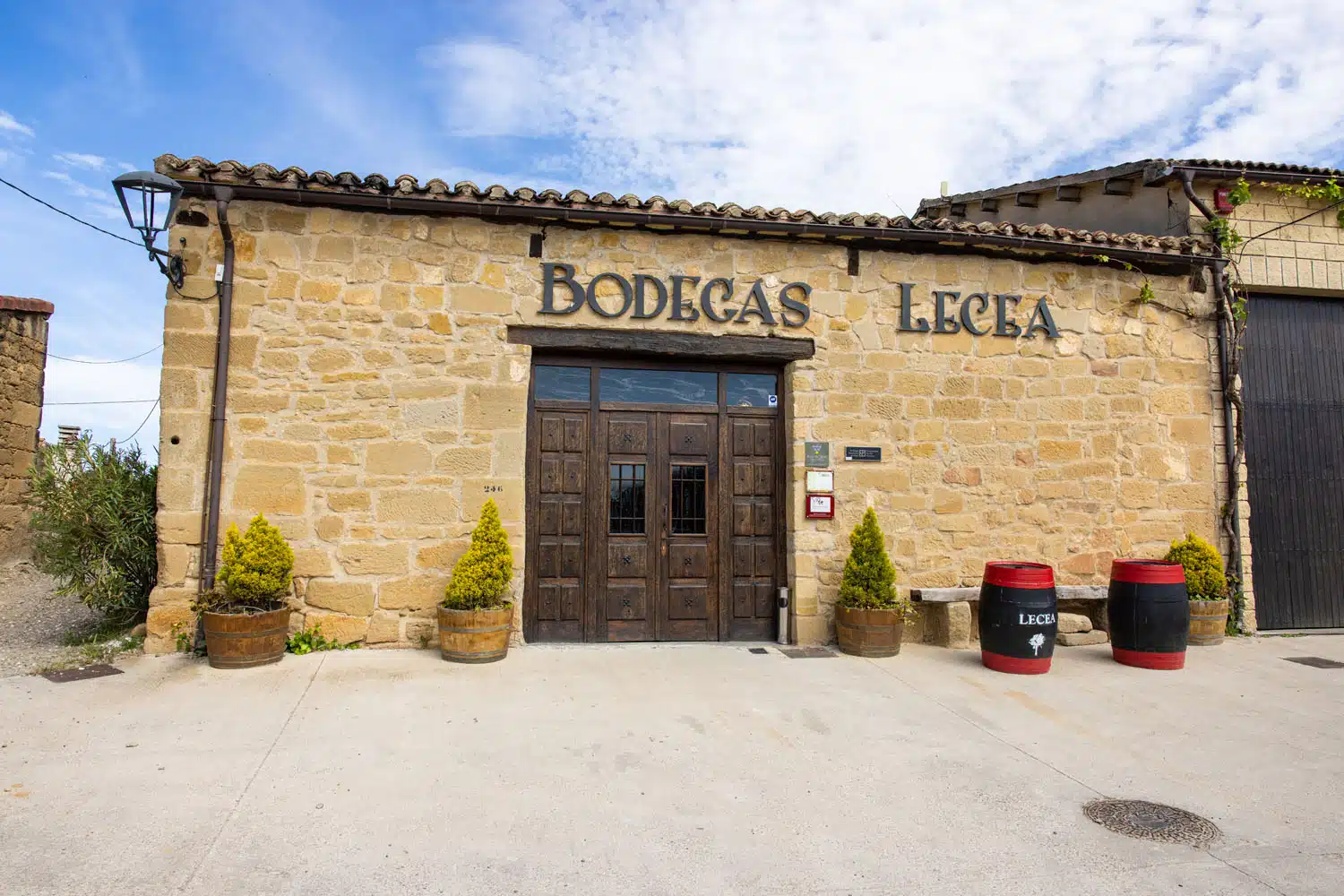
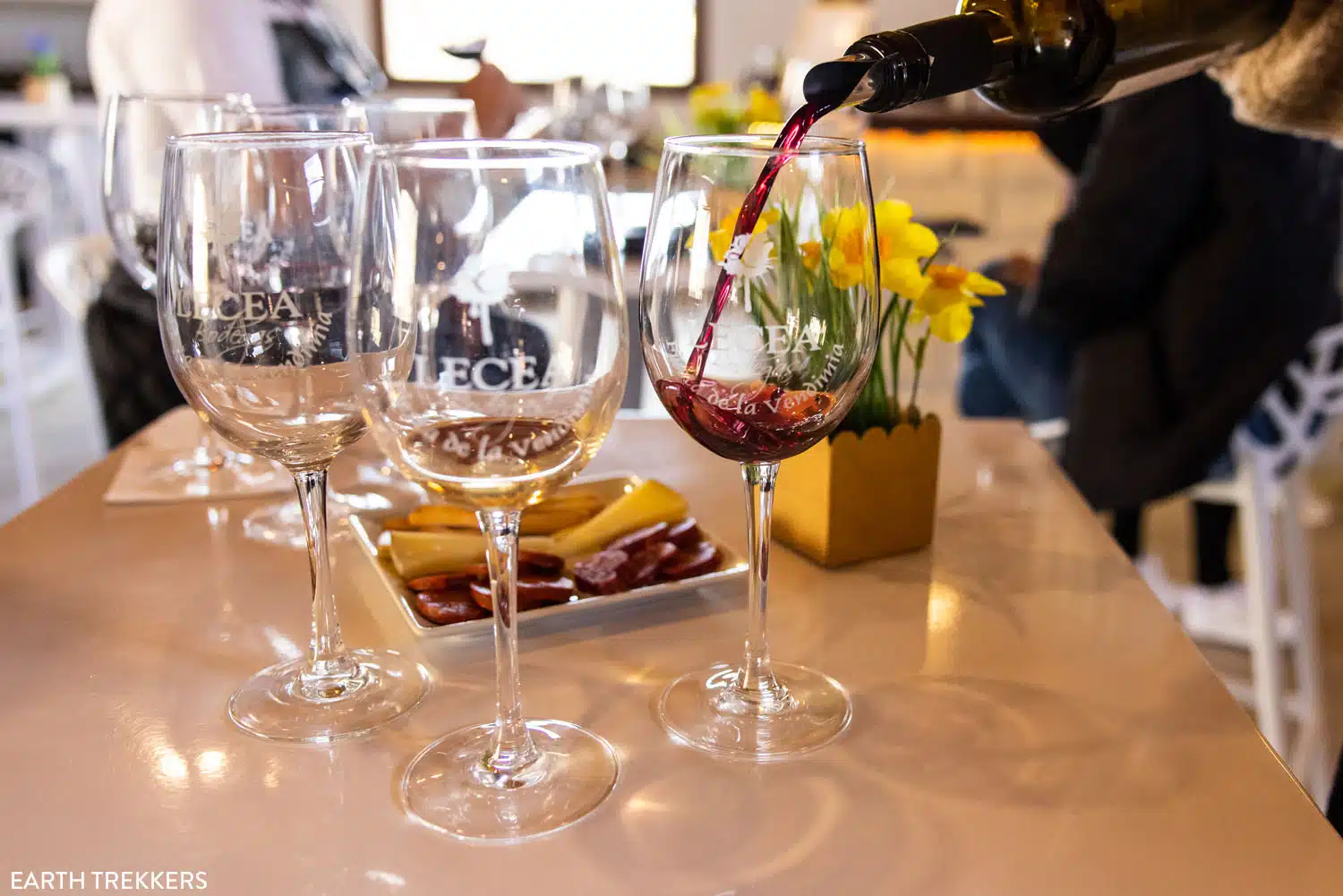
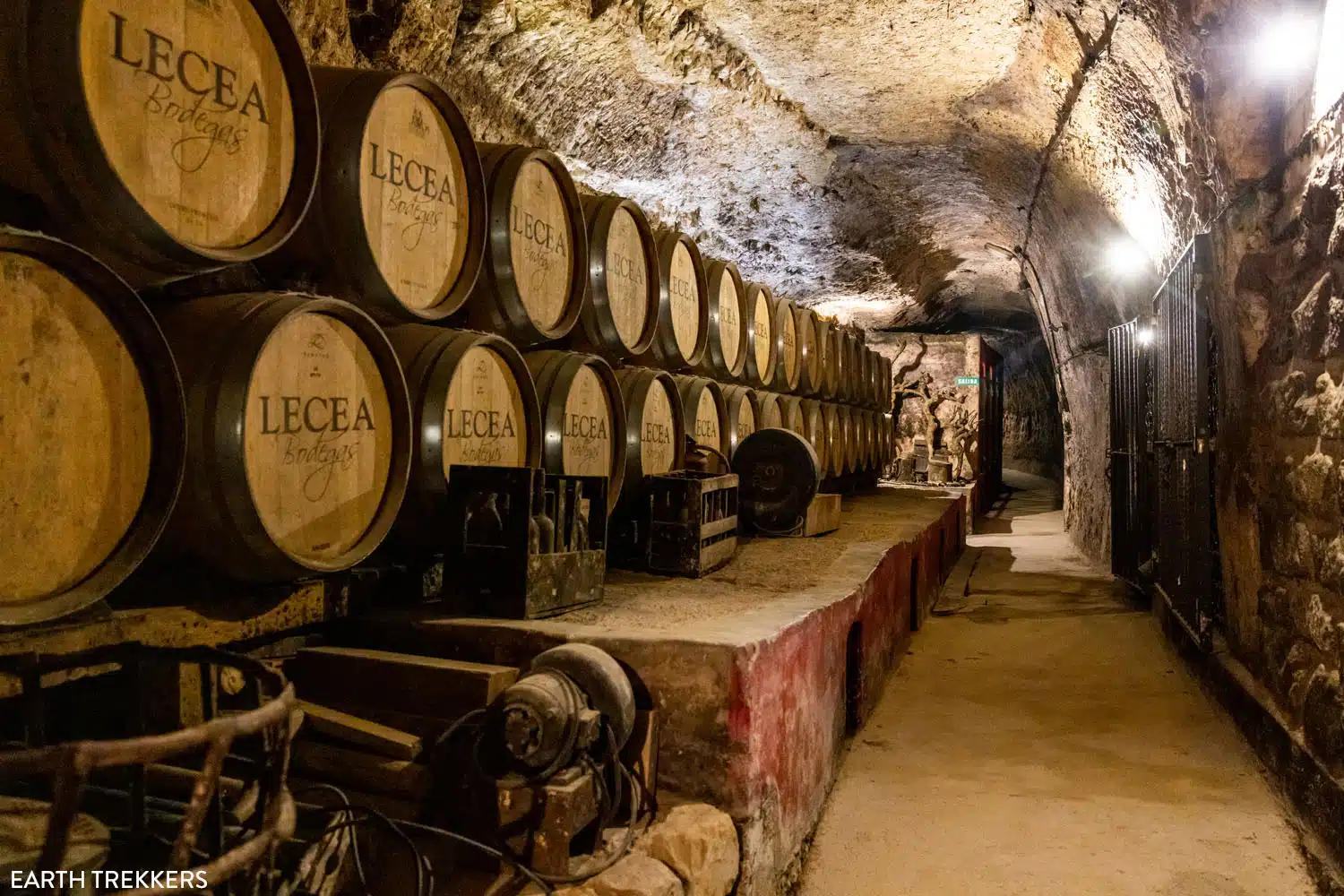
9. Bodegas Tritium
WHY VISIT BODEGAS TRITIUM: To visit one of the most creative wineries in La Rioja. To do a wine tasting in a cave cellar. And to taste cutting edge wines that are being produced in this wine region.
The winemaking process in the Rioja wine region goes back for centuries and has a very traditional process. There is a color-coded labeling system established by the Rioja DOC Board that identifies the wines made in Rioja as either a Crianza (red label), Reserva (burgundy label), or Gran Reserva (blue label). To get this colored label, the wine must meet very stringent criteria. Some traditional winemakers strive to get these color-coded labels.
The green label either signifies a young, fruity wine or a wine that does not follow the traditional process. It does not mean that the wine is not a good wine or that it is a young wine, it just indicates that the wine was made without following all of the rules.
There are wineries in the Rioja wine region who are now breaking out of the mold of the traditional winemaking process, by either using different grapes, larger barrels, or altering a step in the winemaking process. Wines made this way will have a green label.
Bodegas Tritium is one of these wineries.
We loved everything about this experience. Tim and I took a small group tour of the winery, learning about their unique winemaking processes. Tasting their wines in the cave cellar was a highlight.
Our sommelier was extremely knowledgeable and engaging. It was refreshing to taste something a bit different. Don’t get me wrong…Rioja wine is delicious, but the wines at Tritium have subtle differences than the traditional wines.
Try their Dualis, a white wine aged in acacia wood. We loved the Mazuelo, which is 100% mazuelo grapes fermented in 500-liter French oak barrels and then aged in 300-liter French oak barrels. They even have wines bottled in clay pots and then aged in the Mediterranean Sea.
Tritium is one of our favorite wineries in the Rioja wine region and a must-visit for those who want to taste some of the region’s most creative wines. It is located in Cenicero.
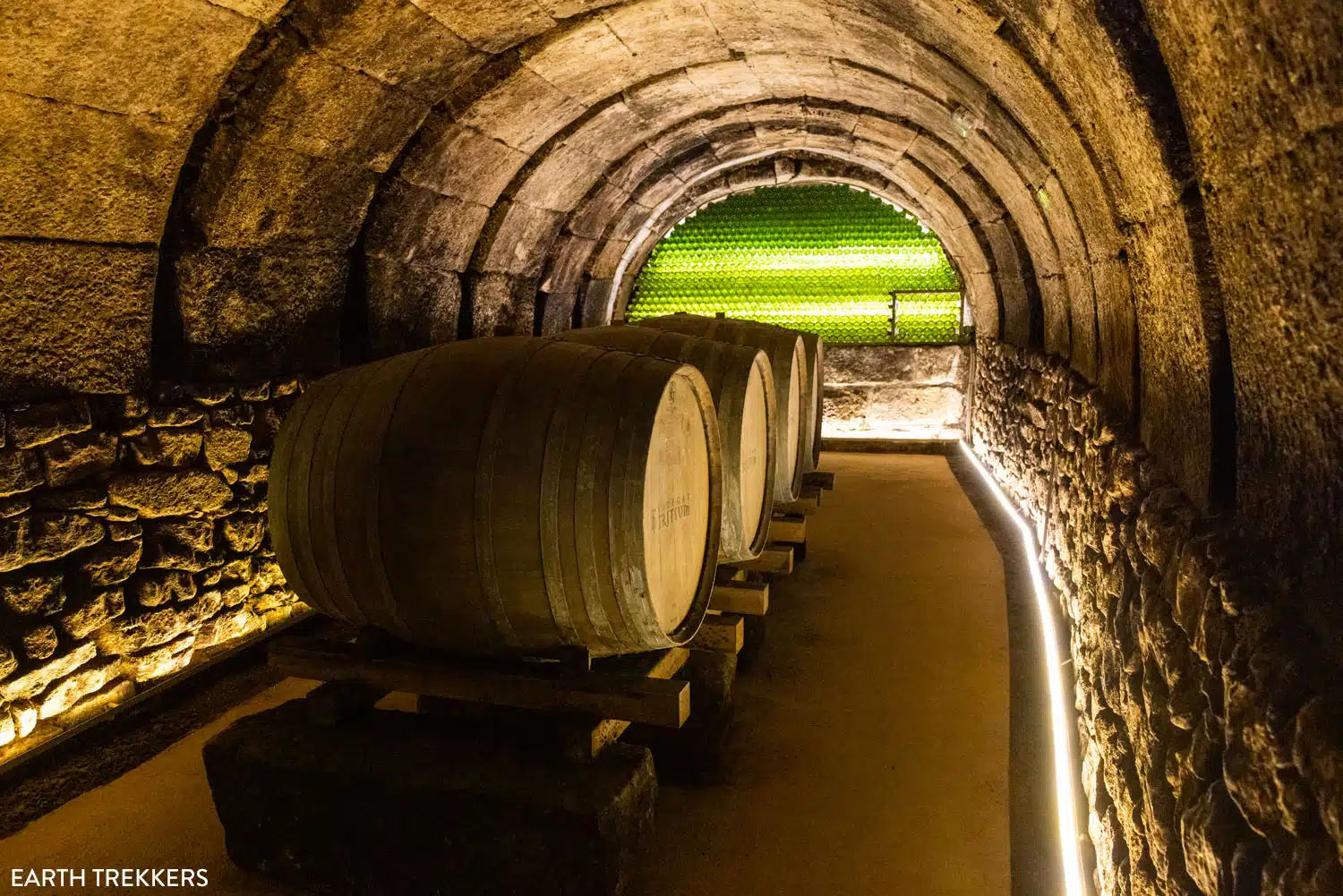
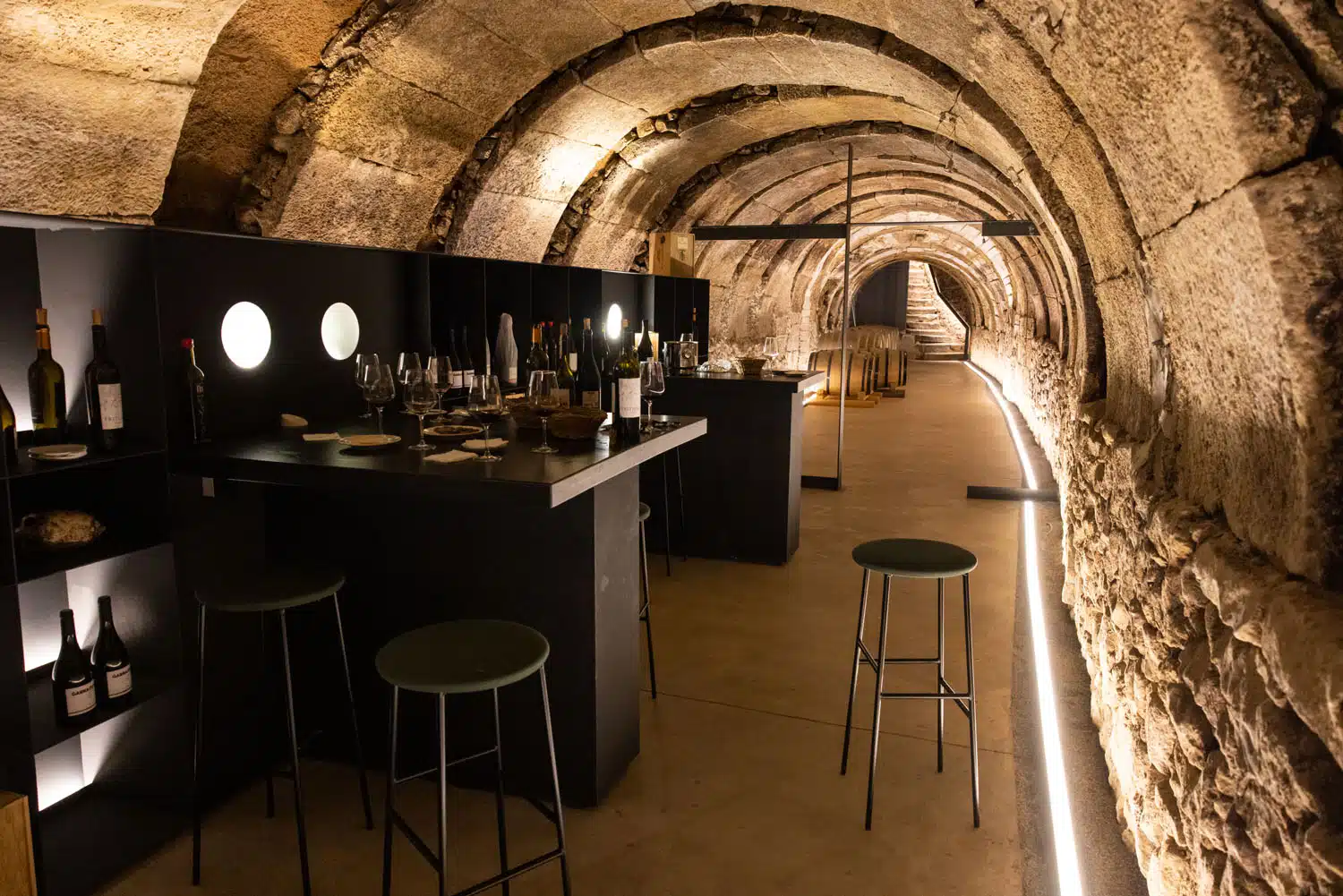
Bodegas Tritium tasting room
10. Herederos del Marqués de Riscal
WHY VISIT HEREDEROS DEL MARQUÉS DE RISCAL: To visit one of the oldest wineries in the Rioja wine region and to see the hotel designed by Frank O. Gehry.
In 1862, Marqués de Riscal bottled its first wines, making it the oldest bottled wine in Rioja. It is now one of the largest wineries in the area and one of the most visited.
In 2006, La Ciudad del Vino opened, along with a brand-new hotel. Designed by Frank O. Gehry, who also designed the Guggenheim Museum in Bilbão and the Dancing House in Prague, this unique hotel features colorful metal sails and it is a sight to see.
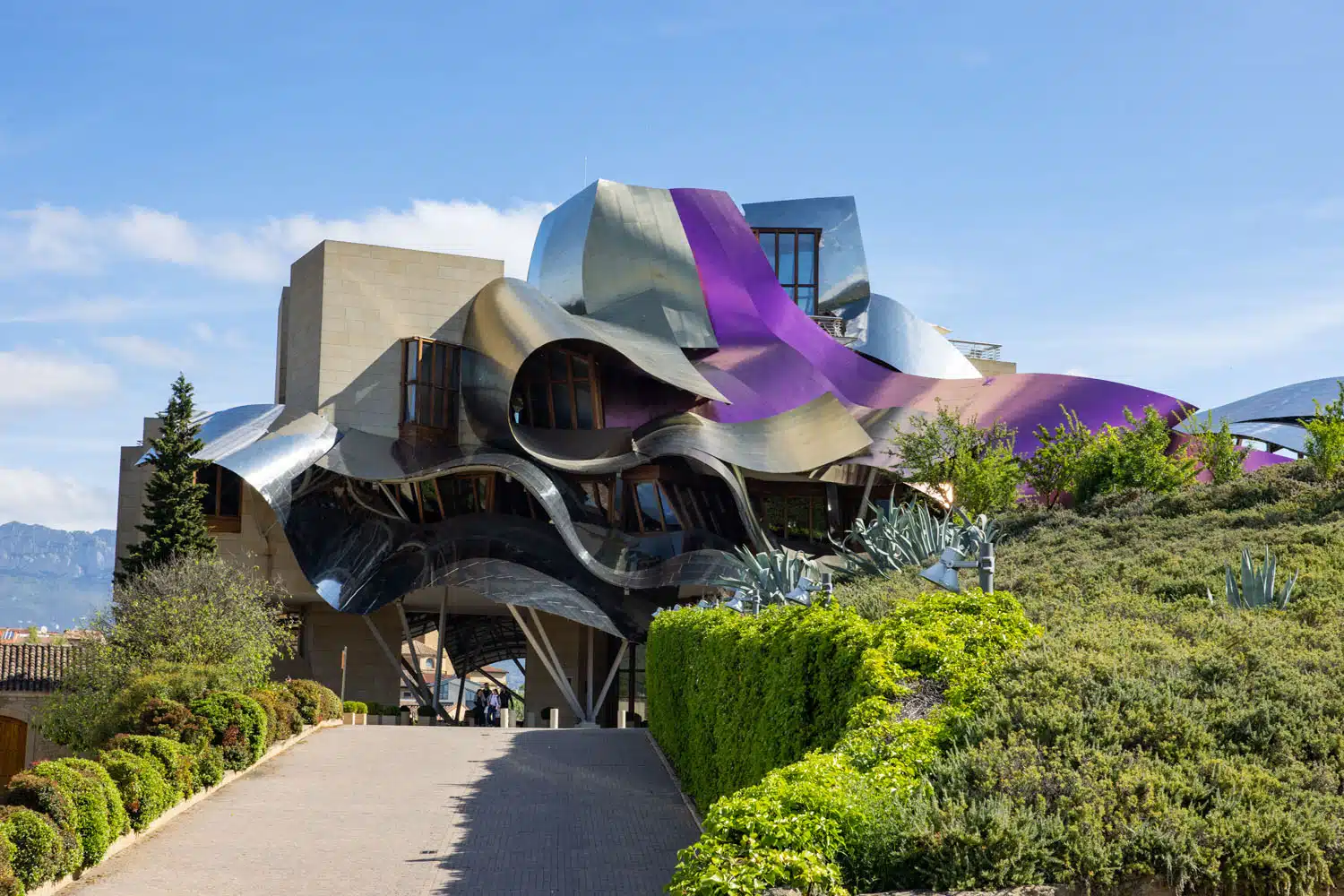
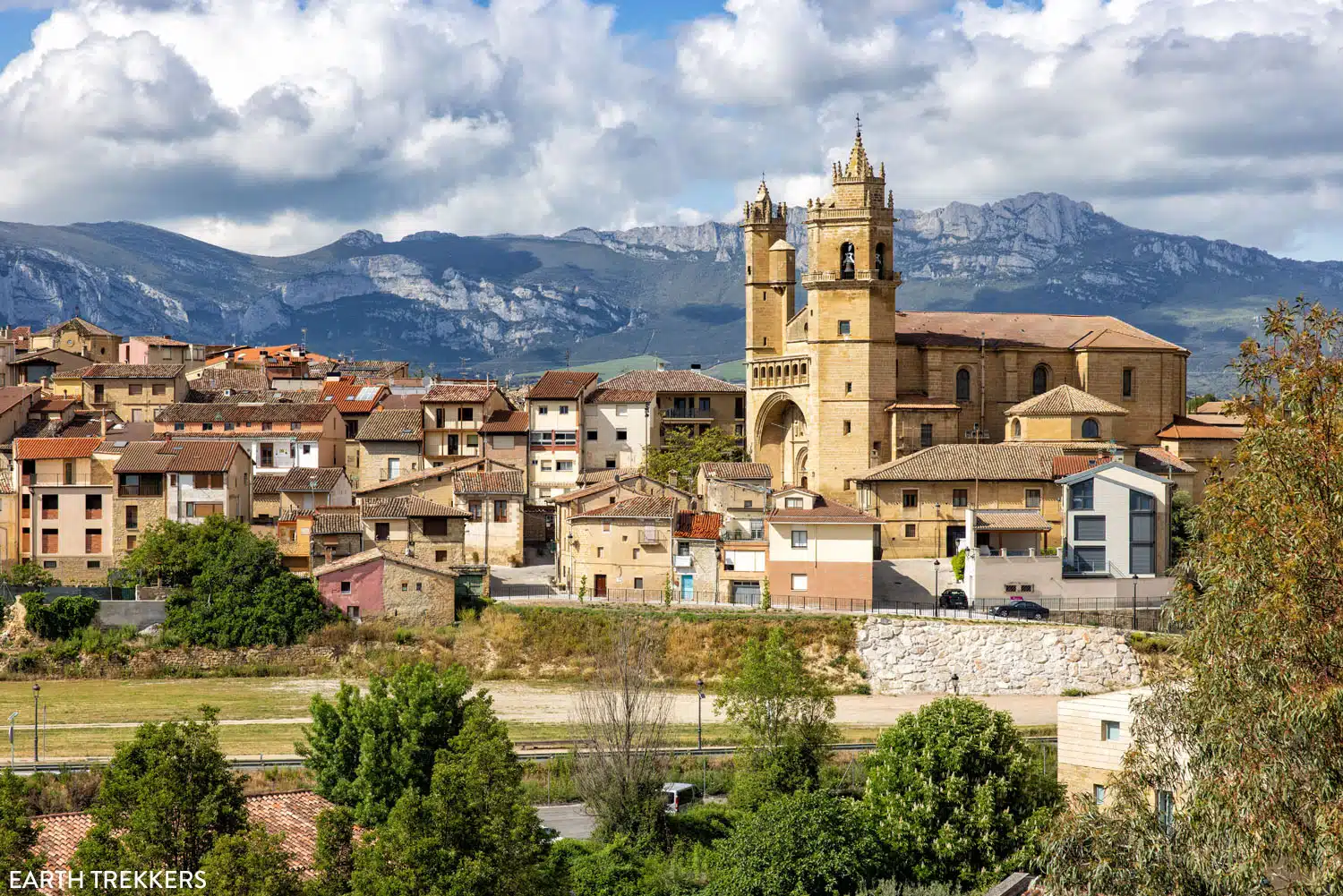
The view of Eltziego from the restaurant and some hotel rooms
On a visit here, you can do a wine tasting in the tasting room, take a tour of the cellars, have dinner at one of several restaurants in the City of Wine, and stay at the hotel.
This is where we stayed on our visit to the Rioja wine region. From our room, we had a breathtaking view of the tiny town of Eltziego. This hotel has a great central location in Rioja, and from here it was a relatively short drive to Haro and Logroño.
We never took a tour of the wine cellar but we ate dinner at the hotel restaurants many nights and worked our way through their list of wines, which were all very good.
11. Eguren Ugarte
WHY VISIT EGUREN UGARTE: For its views over the surrounding vineyards and nearby mountains.
We chose to visit Eguren Ugarte for its gardens and hilltop setting. Its flowering gardens, small, picturesque pond, and views of the nearby mountains and surrounding vineyards is what makes this place special.
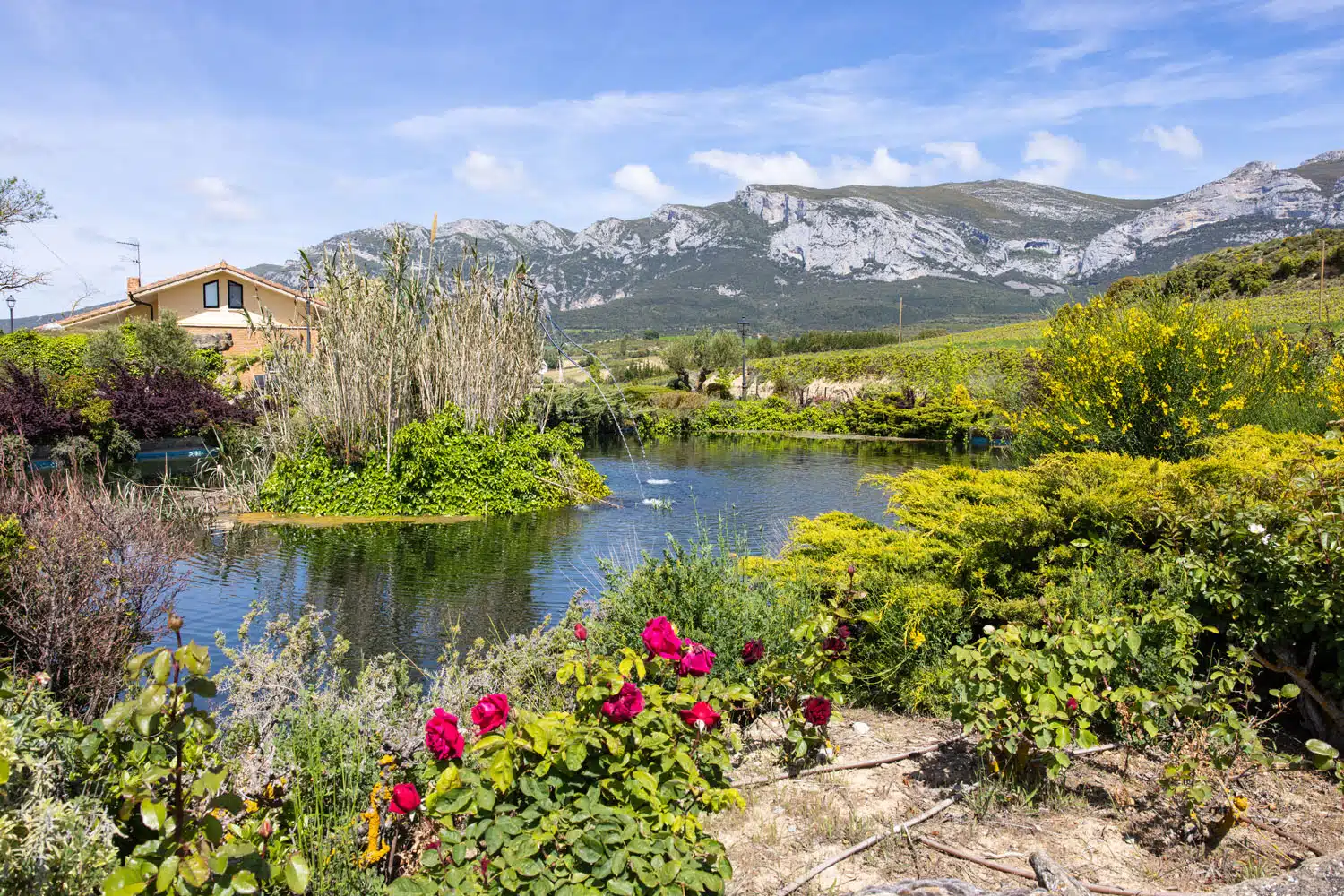
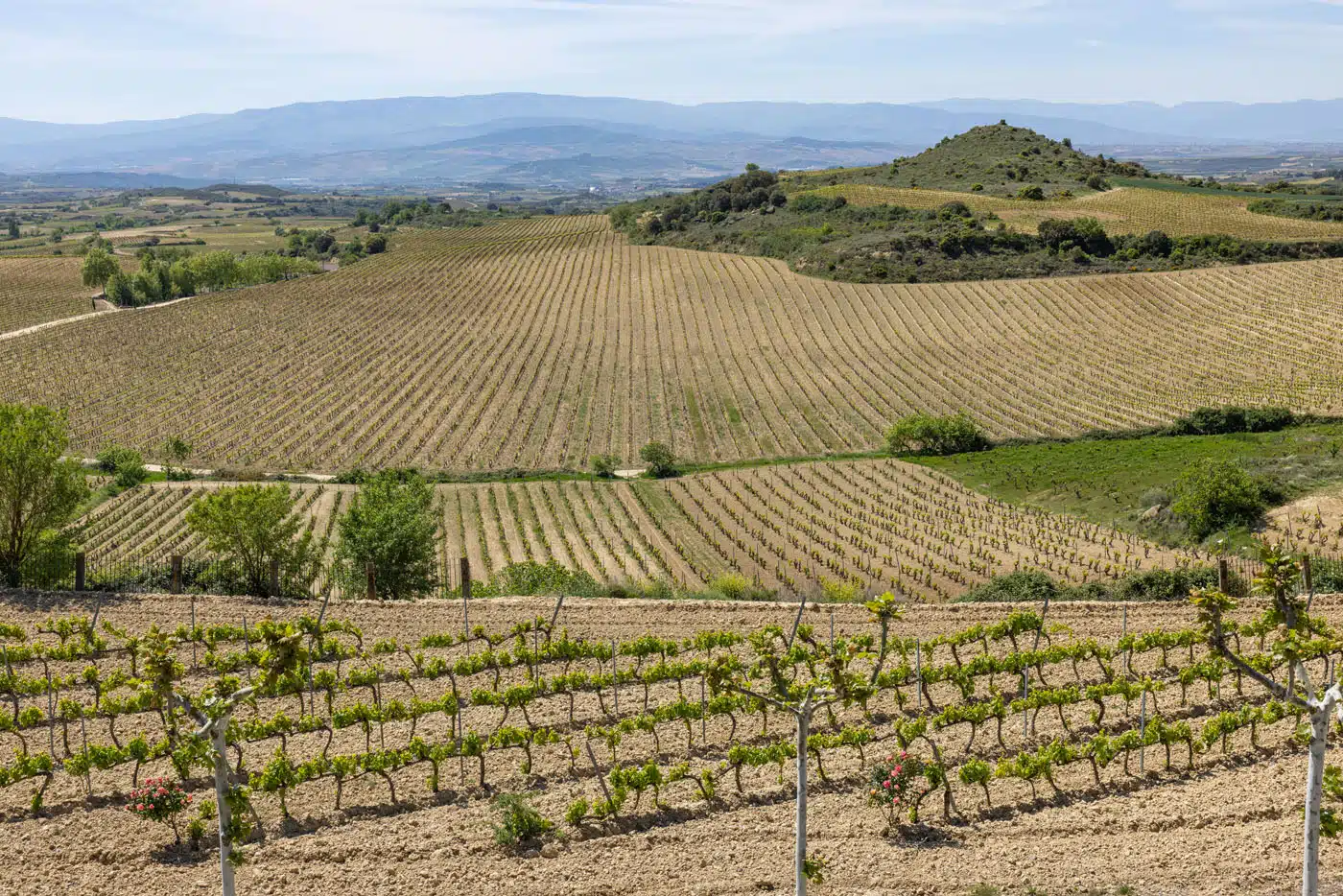
La Rioja in early May
For visitors, do a tasting or order a glass of wine from the wine bar or take a tour of the property. On weekends, they serve tapas from the wine bar.
A visit to Eguren Ugarte is worth it if you will be in the area and like the idea of a quick visit to a small, pretty winery. But in our opinion, many of the wineries we already listed, and are about to list, are more interesting.
Eguren Ugarte is located near Laguardia. They also run a small hotel.
12. Ysios Winery
WHY VISIT YSIOS WINERY: To visit one of the most iconic wineries in the Rioja wine region.
Just down the street from Uguren Ugarte is Ysios Winery. Ysios is famous for the innovative, modern design of its winery, a unique building with its metallic, undulating roof. Taking a photo of this building, set amongst the vines, is a popular thing to do on a visit to the Rioja wine region.
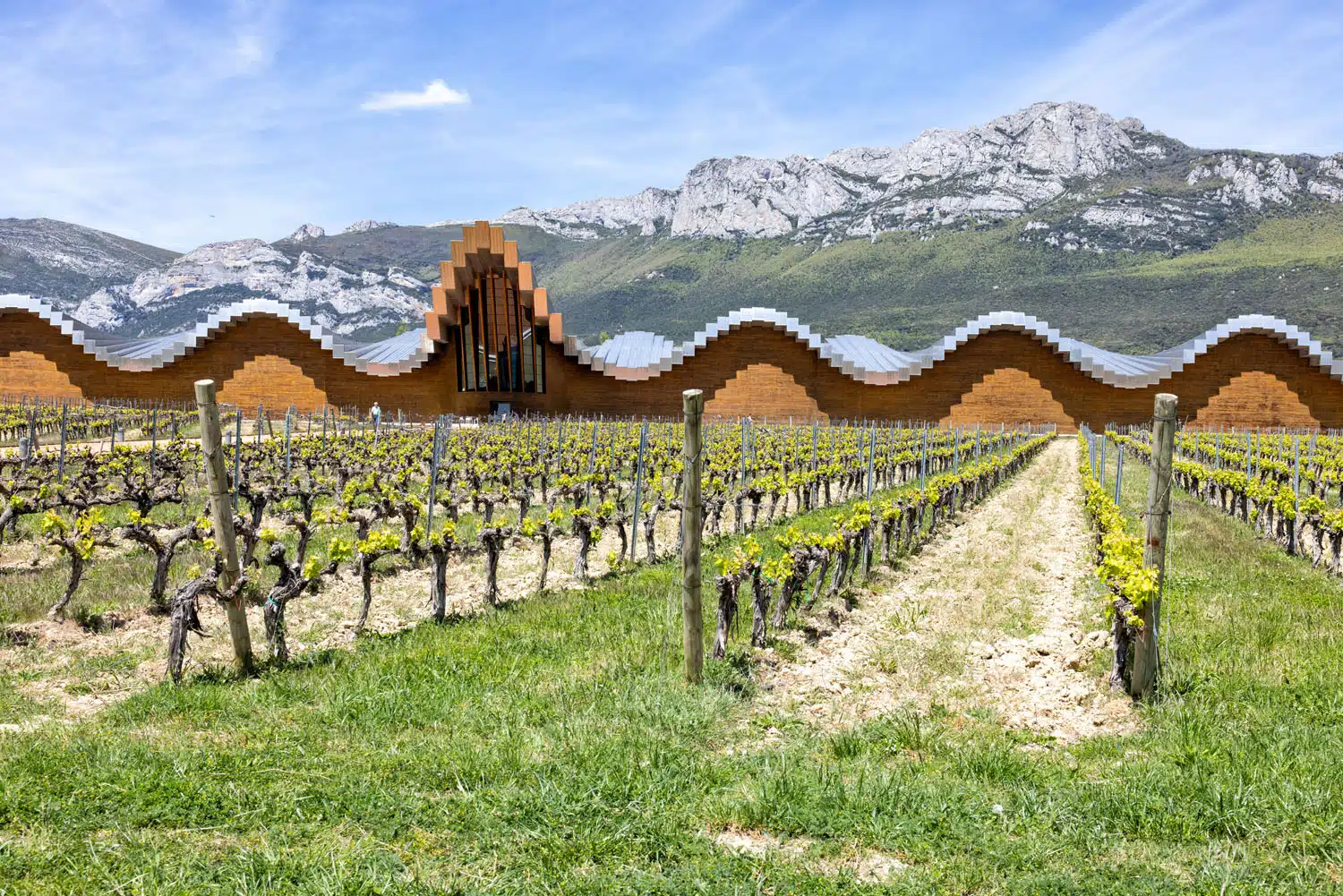
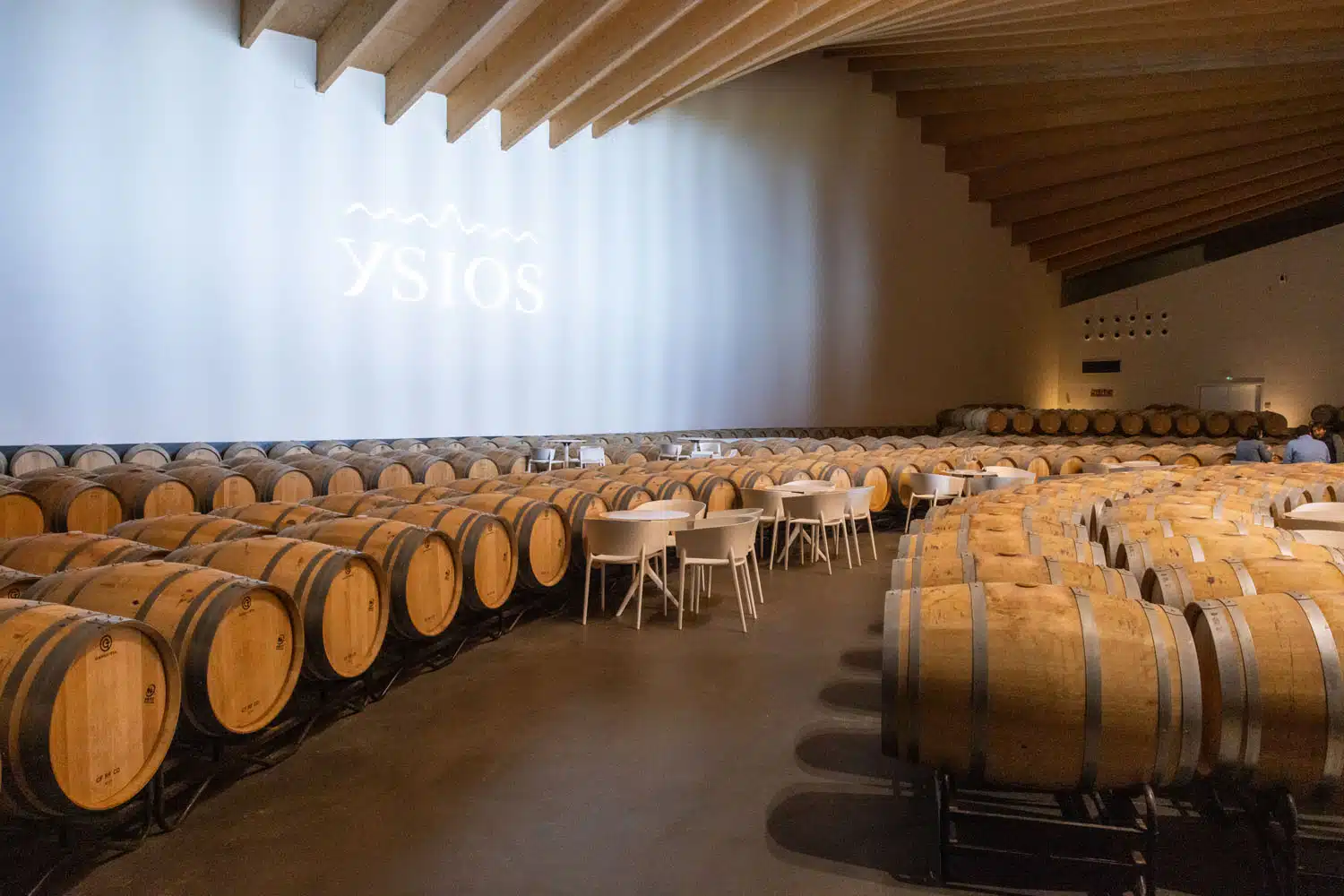
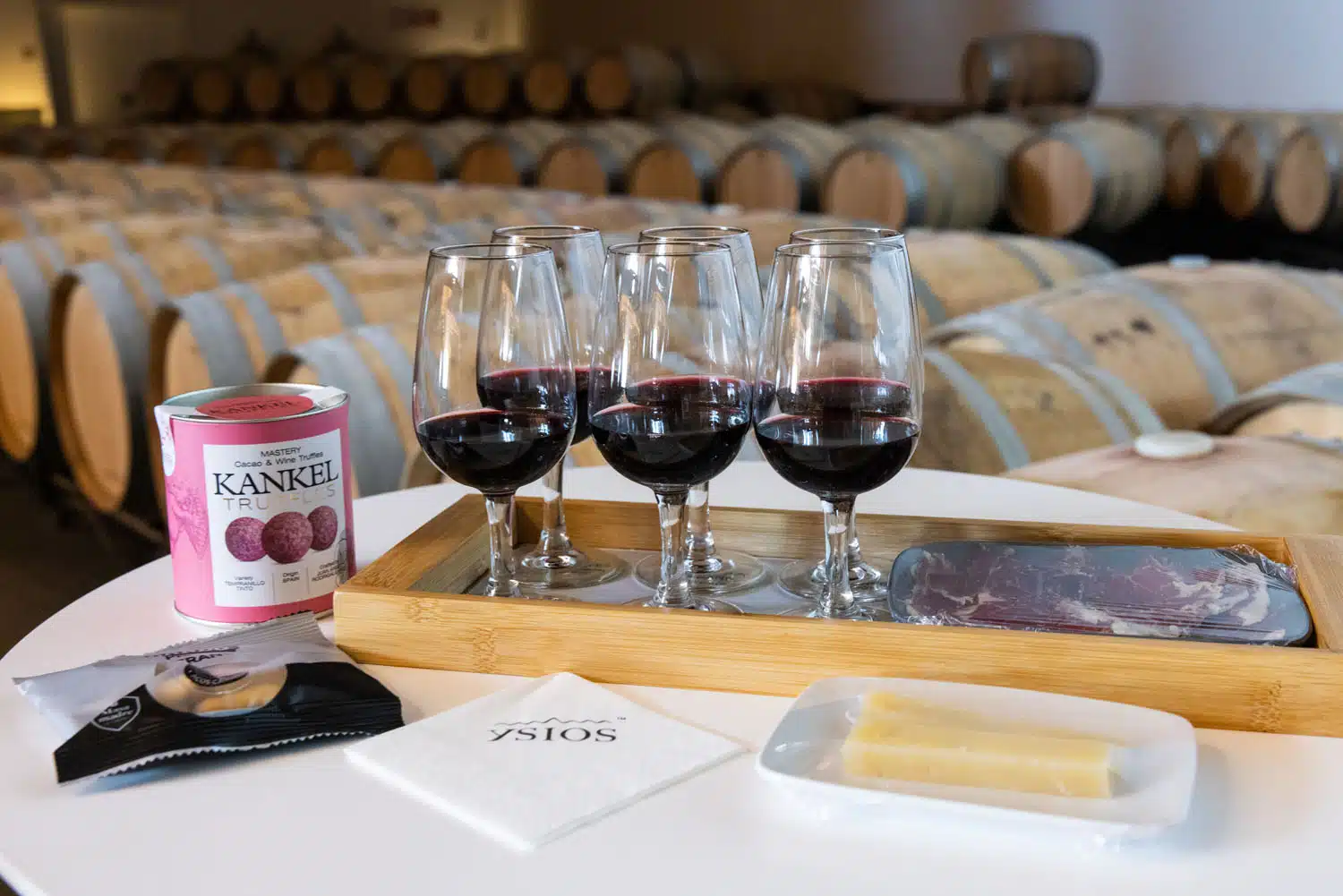
Inside, the building is just as modern. In the reception area, visitors will assemble for their tour or they can order wine flights, wine tastings, and snacks from the wine bar.
We opted for the wine flight, taking our six glasses of wine, plus a small charcuterie board, into the massive storage room filled with barrels. Tables are located throughout this huge room, giving visitors some distance.
We did not take a tour, since we saved our “tour times” for places that did not have wine bars, but the guided tours at Ysios Winery get very good reviews.
Overall, it was a nice experience. I think it is worth it to get a view of the winery, but if you are short on time, we liked a lot of other wineries on this list more.
13. Bodegas Solar de Samaniego
WHY VISIT BODEGAS SOLAR DE SAMANIEGO: To see the painted tanks of wine and taste some amazing Rioja wine. Tours are in Spanish, so it is best if you know at least some basic Spanish for this visit.
This was our first visit to a winery in Rioja and it was one of the most memorable.
Bodegas Solar de Samaniego is a small winery located in Laguardia. It doesn’t look like much on the outside, but there are some hidden treasures inside.
Getting into the winery, or I should even say parking lot, was challenging. There is a gate to go through and everyone at the winery speaks Spanish. To get through the gate, push the Office 1 button, let them know you are here for a tour, and they will open the gate.
When we did this, the tour was only in Spanish. I can speak a little Spanish, so we got by just fine. But between my poco de Español, the guide’s little bit of English, and some hand movements, we were able to understand quite a bit.
Our guide was absolutely delightful. After our introductions, she handed Tim and I a glass of wine and then took us through the winery, teaching us about the production process. We were treated to several tastings along the tour.
The highlight is seeing the seven concrete tanks of wine painted with portraits of the winemakers and employees at Bodegas Solar de Samaniego. These portraits were painted by Guido van Helten, an Australian artist. It took seven weeks to paint all of the portraits and part of the tour includes a video about how this was done.
Our visit ended with more tastings and some “free time” to sit in their library and enjoy a glass of wine.
We really enjoyed this experience. The wine is great too and we now have a few bottles at home. It is helpful to speak at least a little bit of Spanish. If you don’t know any Spanish at all, you may feel lost on this tour, unless they start offering tours in English.
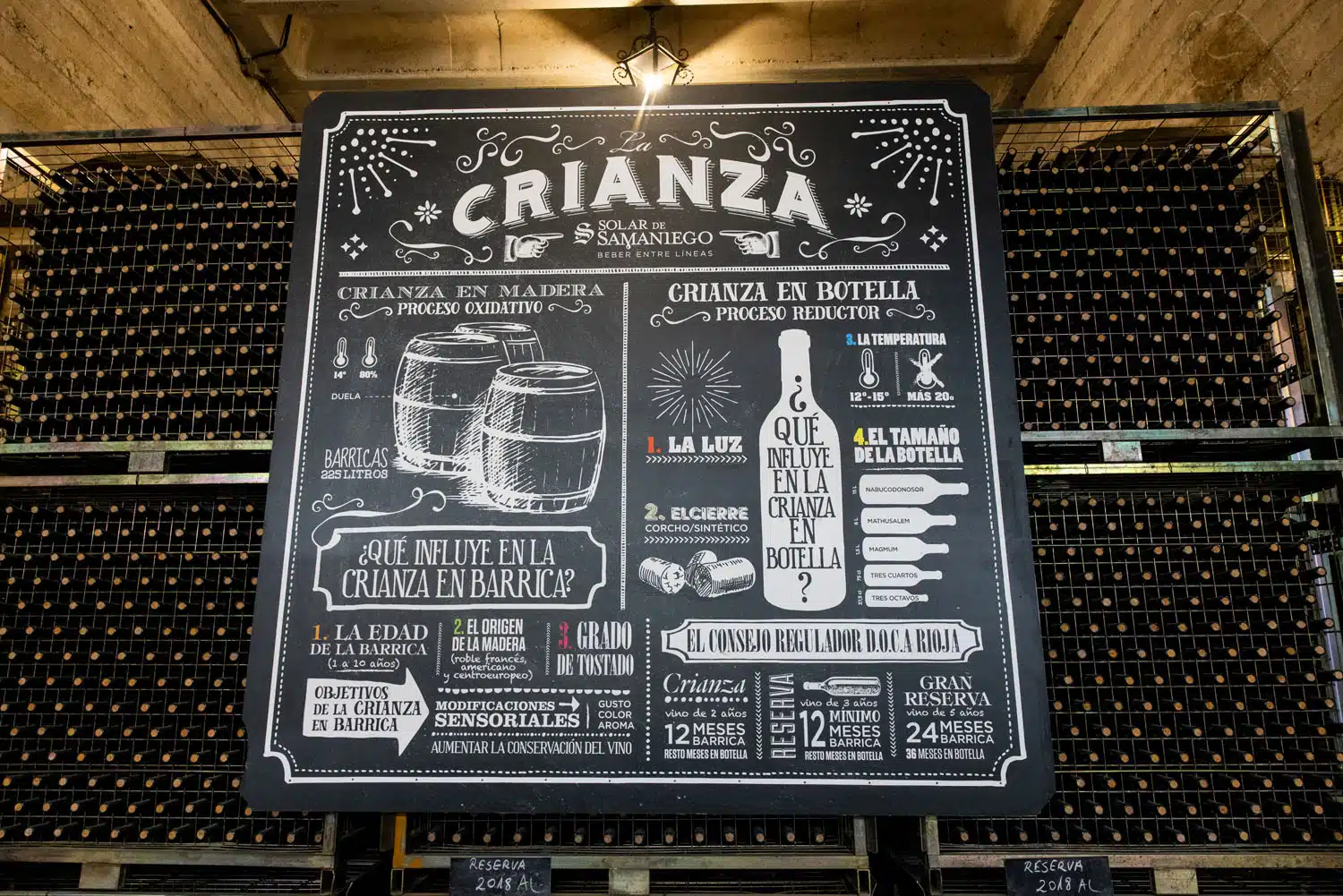
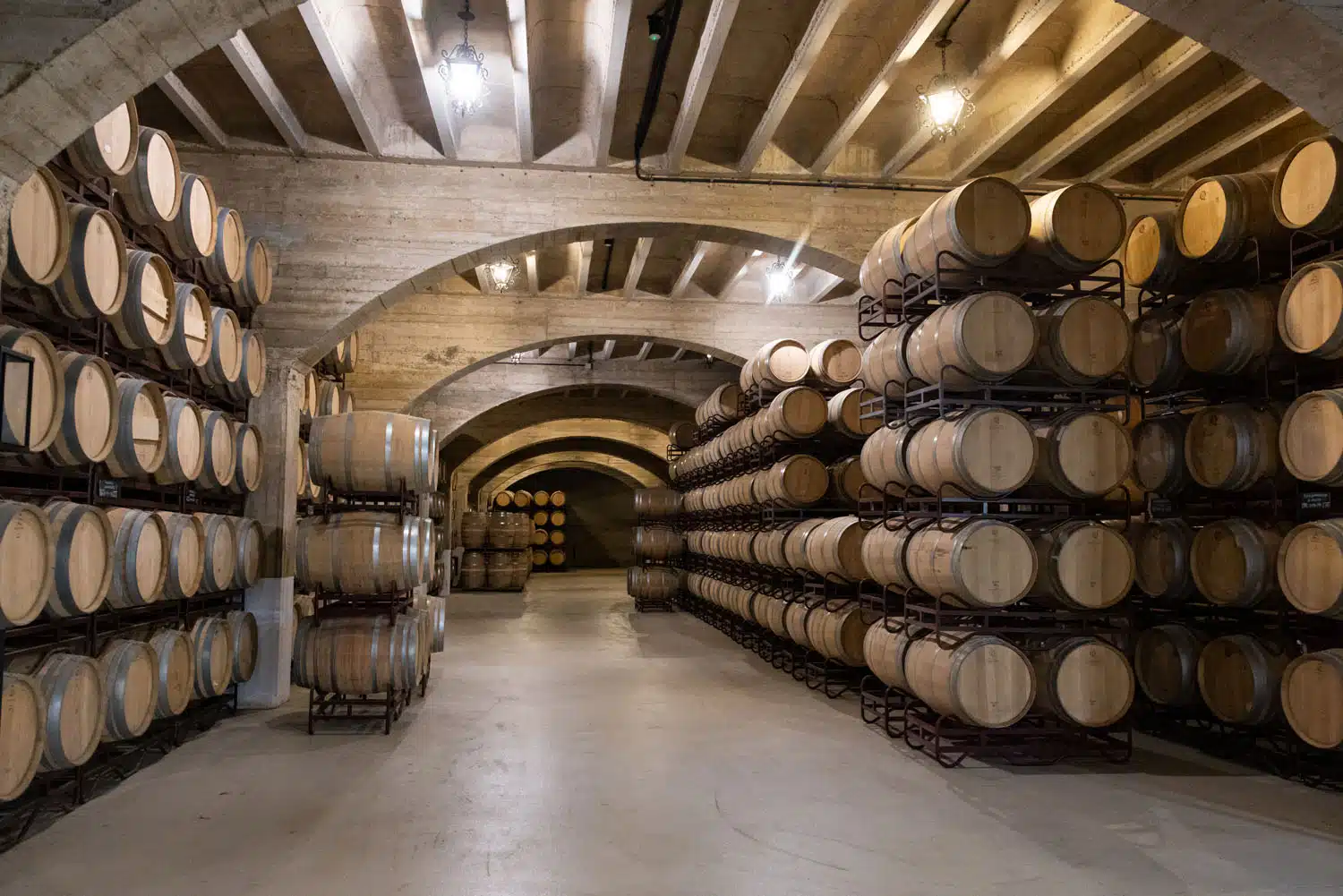
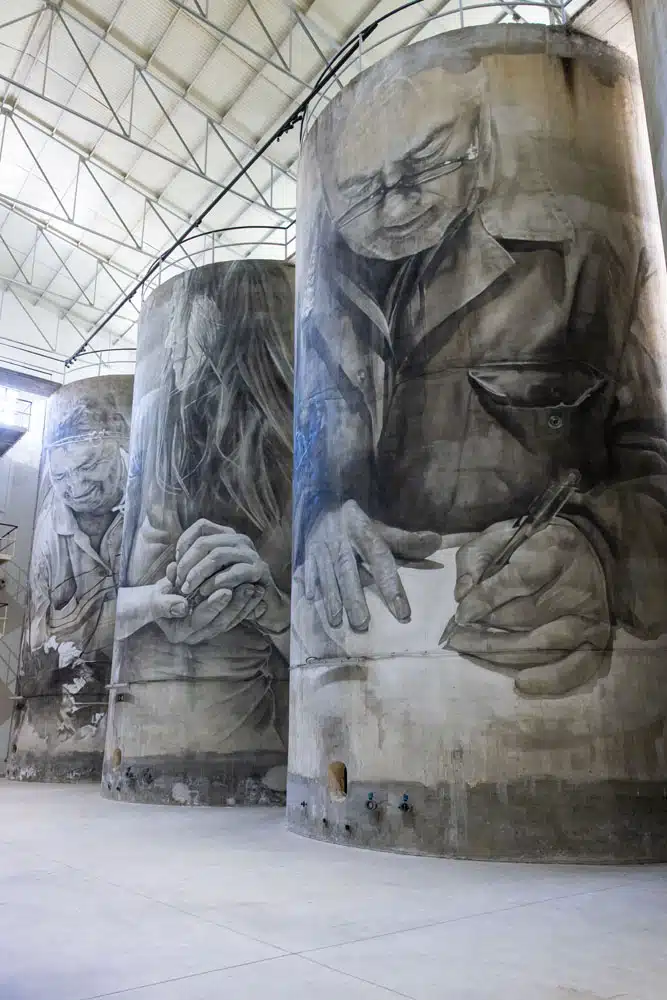
Concrete tanks at Solar de Samaniego
14. Bodegas Campo Viejo
WHY VISIT CAMPO VIEJO: To taste wine in a beautiful outdoor setting with great views of the vineyards and to see one of the largest underground cellars in the Rioja wine region.
Bodegas Campo Viejo is another big name in Rioja wine. It’s a label that we can get at most wine stores in the USA.
Bodegas Campo Viejo is located just outside of Logroño. It has a hilltop setting with sweeping views of the eastern part of the Rioja wine region.
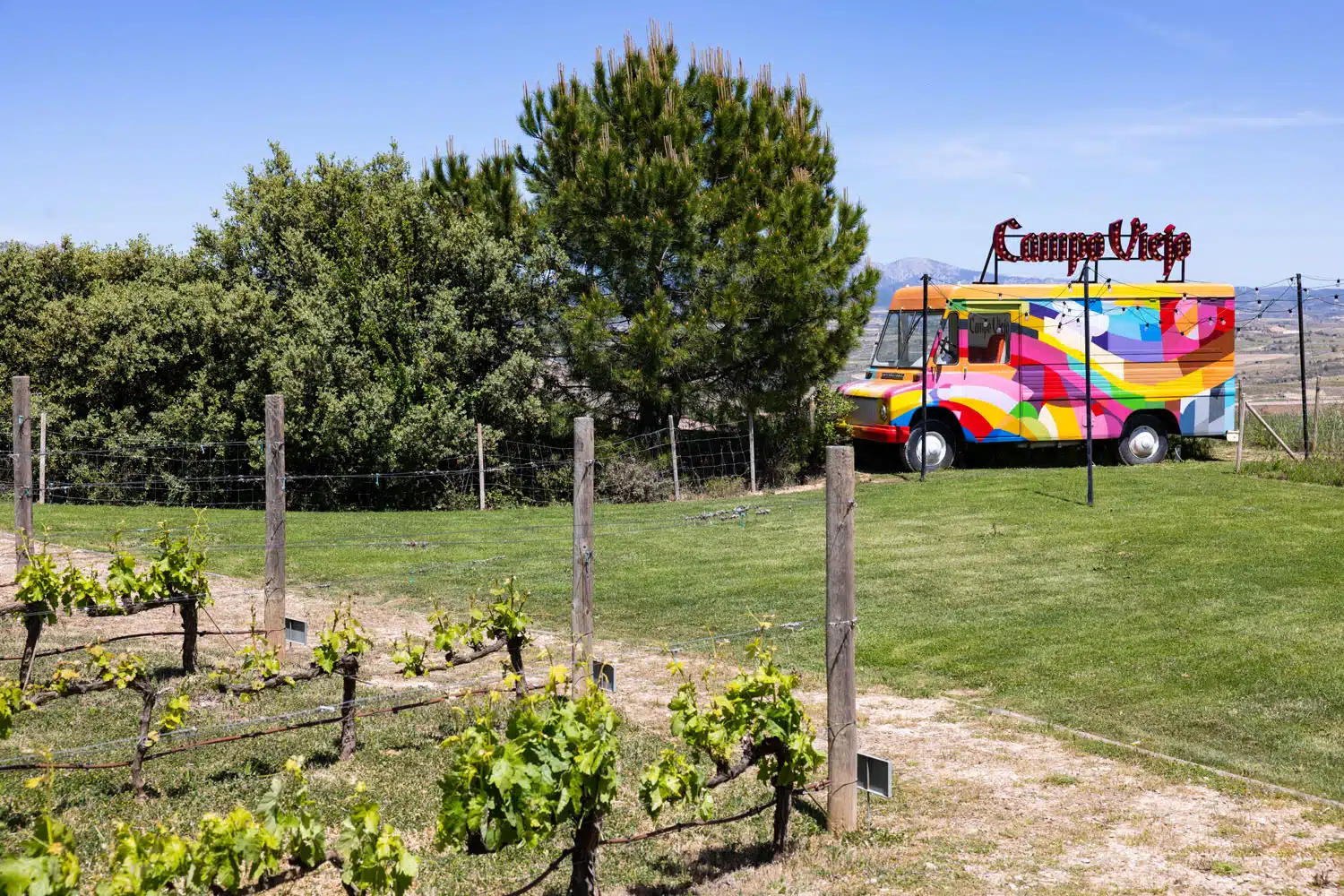
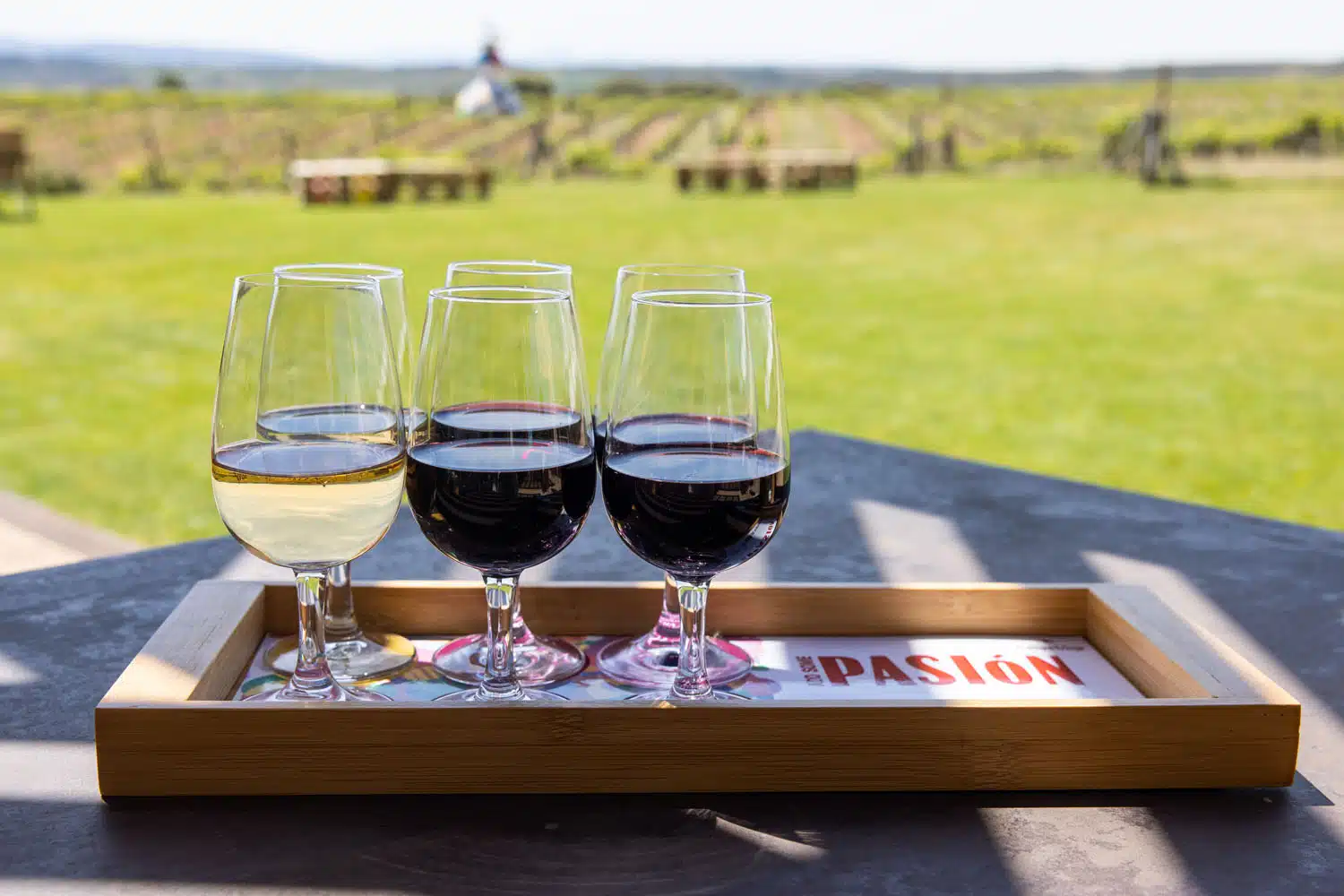
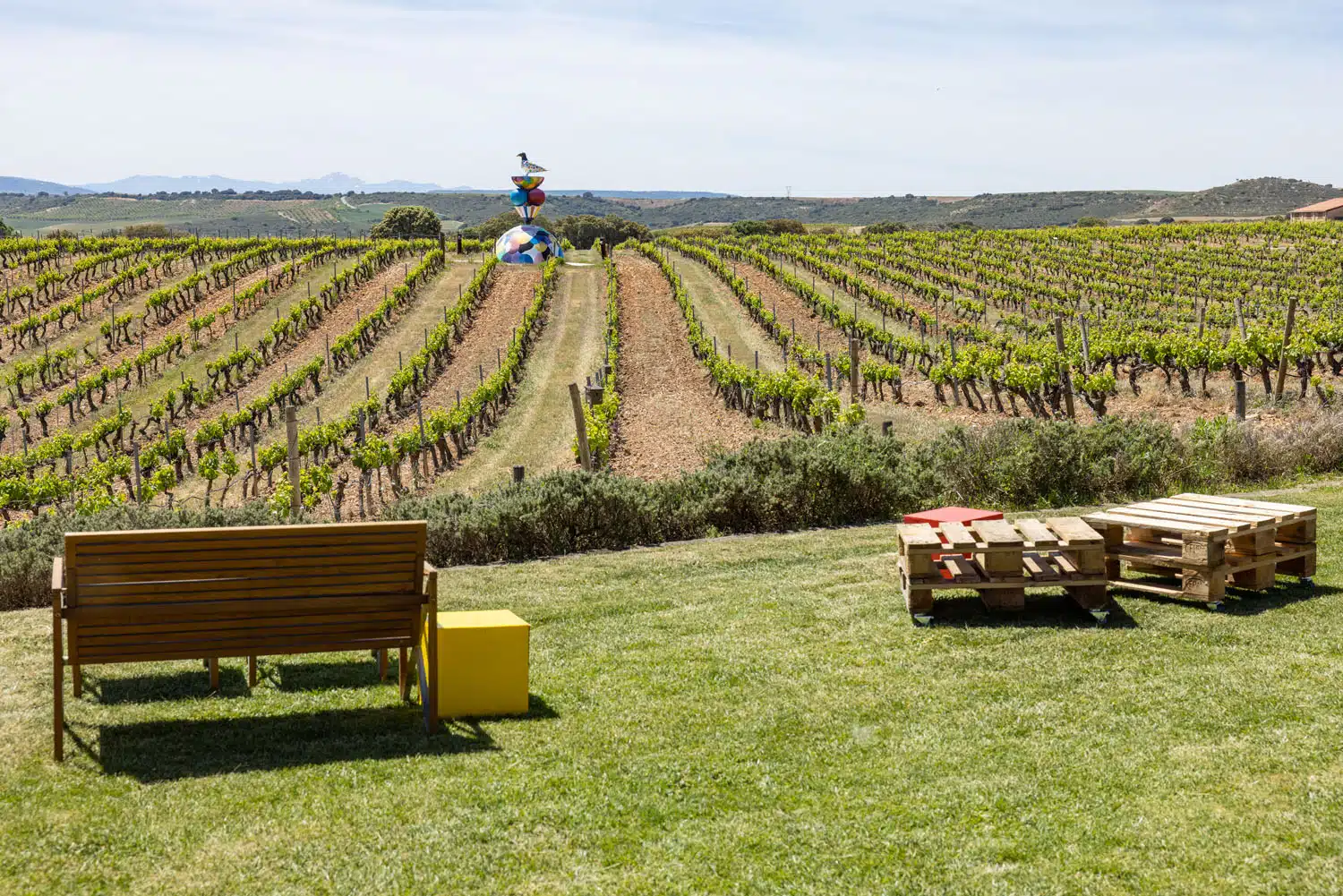
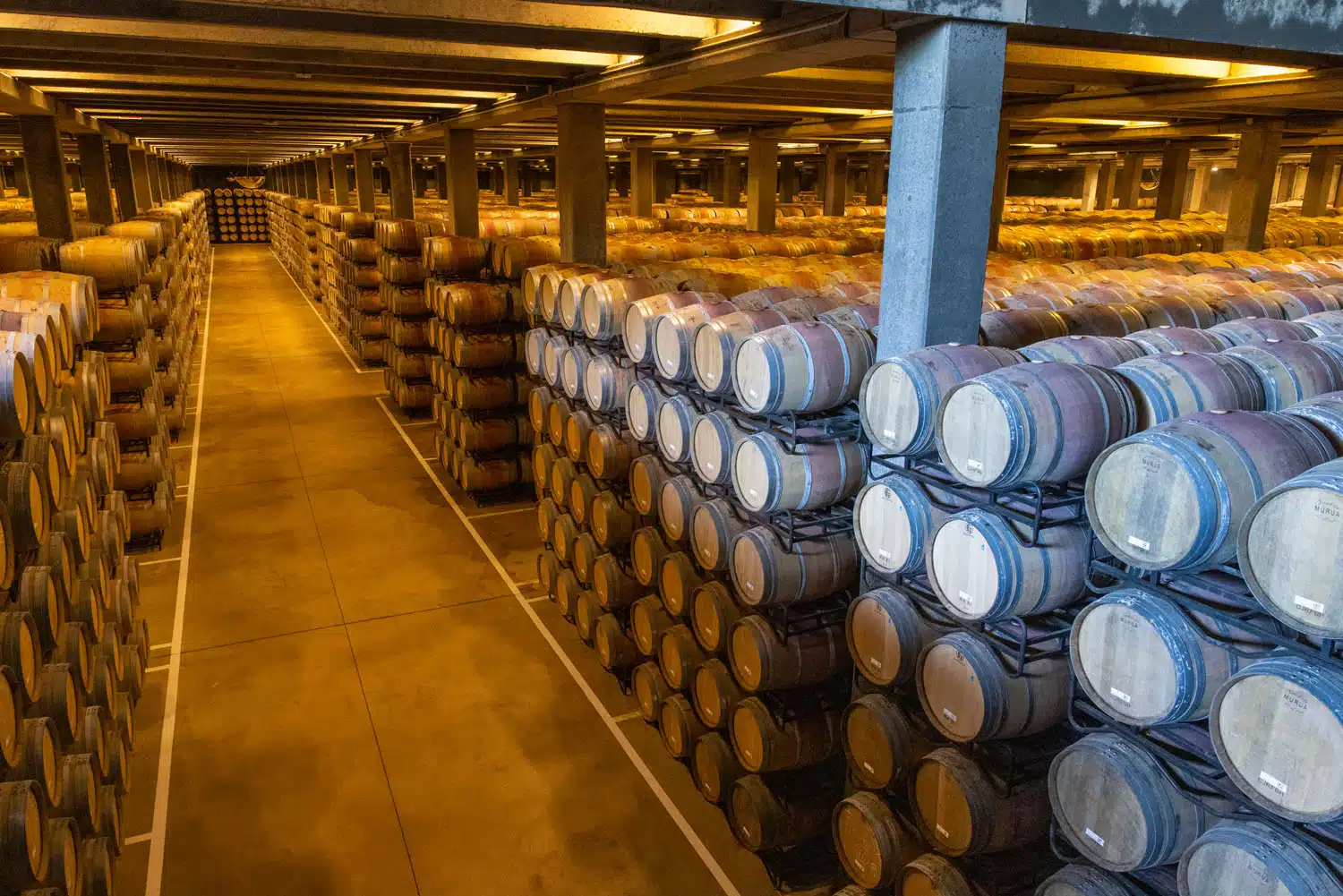
Campo Viejo blends together traditional and modern winemaking methods, producing traditional red and white wines, along with ecological wines, sparkling rosés, and semisweet white wines.
We tasted quite a bit here, choosing to do two tastings. A normal tasting consisted of four reds, one rosé, and one white wine. We also added on a ‘special tasting,’ which was wine made by their wine master just before she retired.
Tim and I sipped on these wines on their outdoor terrace, with views of the vineyards. Afterwards, we were invited to see their huge underground cellar that contains 70,000 barrels of wine and 5 to 6 million bottles, making it one of the largest underground cellars in the world (according to their website). That just goes to show how much wine Campo Viejo produces.
Overall, a visit here is a very laid back, casual experience. Campo Viejo also produces some of the most affordable wine in the area.
15. Bodega Marqués de Murrieta
WHY VISIT BODEGA MARQUÉS DE MURRIETA: To taste the best wine in Spain and one of the top 10 wines in the world. In 2023, the wine bar was recognized as the best in Spain. Add on a few tapas to your wine tasting for a truly gourmet experience.
We liked this winery so much that we visited it twice. And one of the reasons we came back was for the food.
Marqués de Murrieta is a winery with a long history. In 1852, the first wines were produced here, using techniques from Bordeaux, France. Some of this wine was sent to Mexico and Cuba, making it the first Rioja wine to be exported.
Marqués de Murrieta is constantly evolving, blending traditional techniques with newer, cutting-edge processes. A brand-new production area, filled with the most innovative winemaking equipment, sits next to Ygay Castle, one of the oldest production buildings in Rioja.
The wine that Marqués de Murrieta produces is award winning. The 2012 Castillo Ygay received 100 points by Robert Parker and James Suckling has named it the best wine in Spain and one of the 10 best wines in the world. In 2023, their wine bar was recognized as the best in Spain.
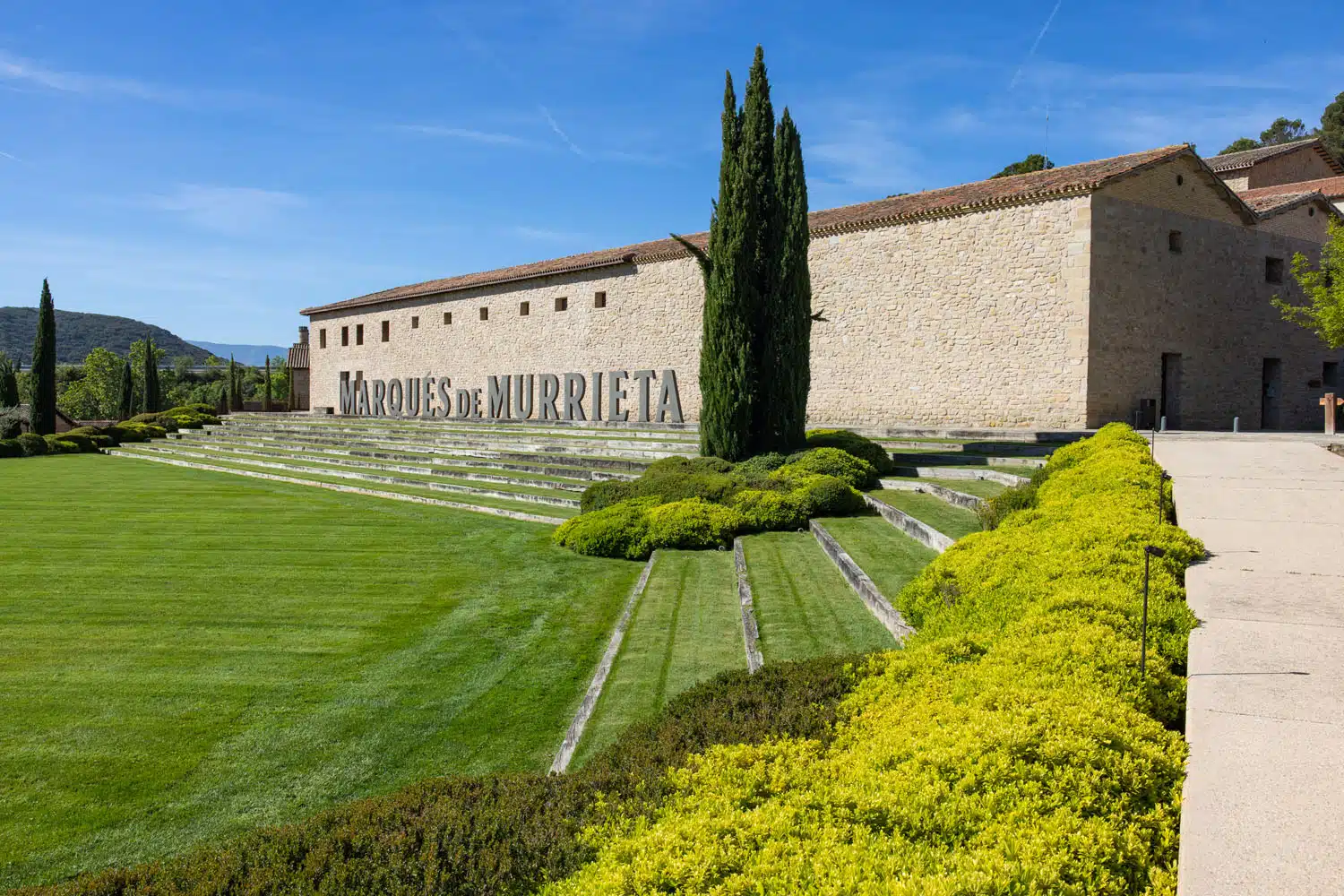
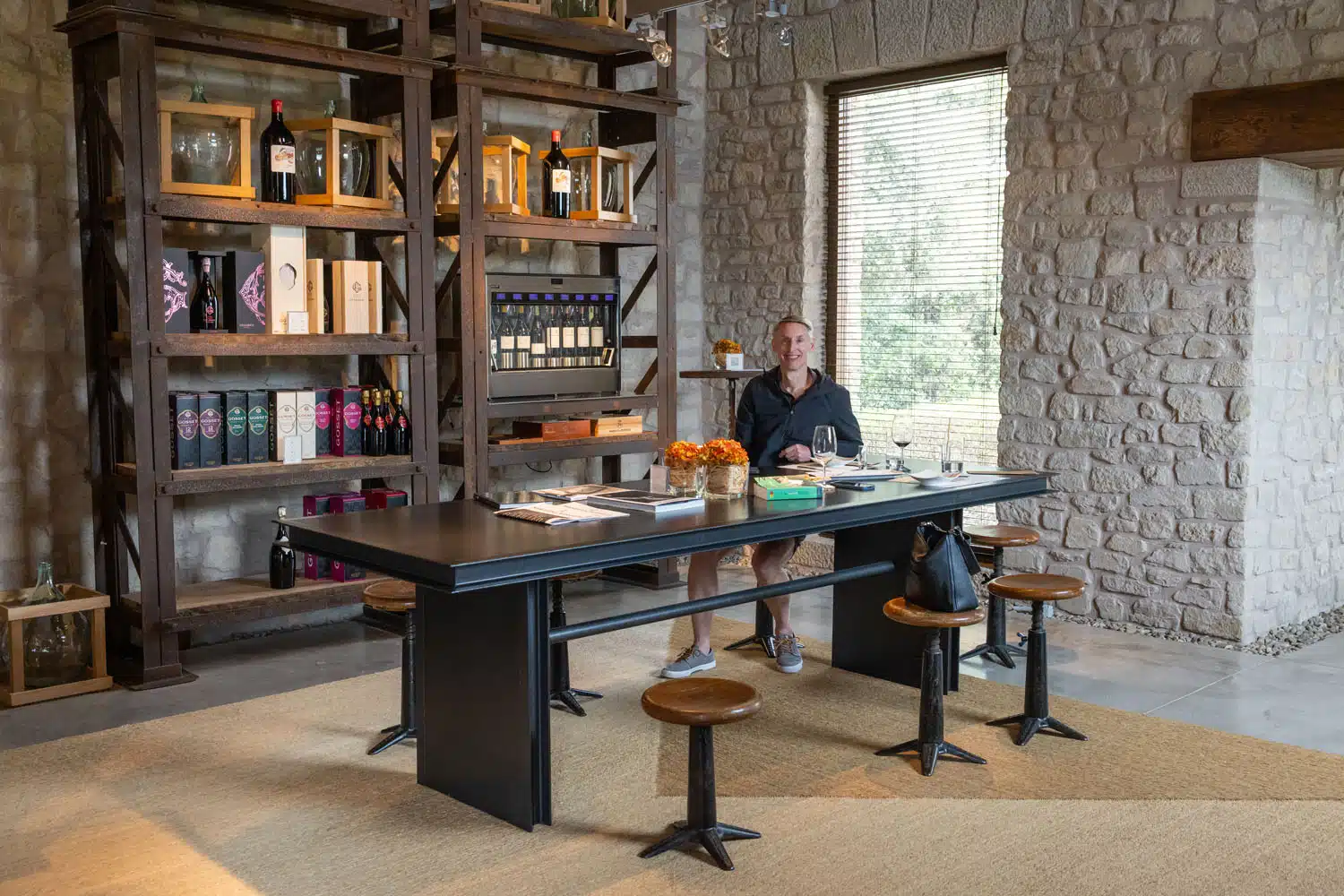
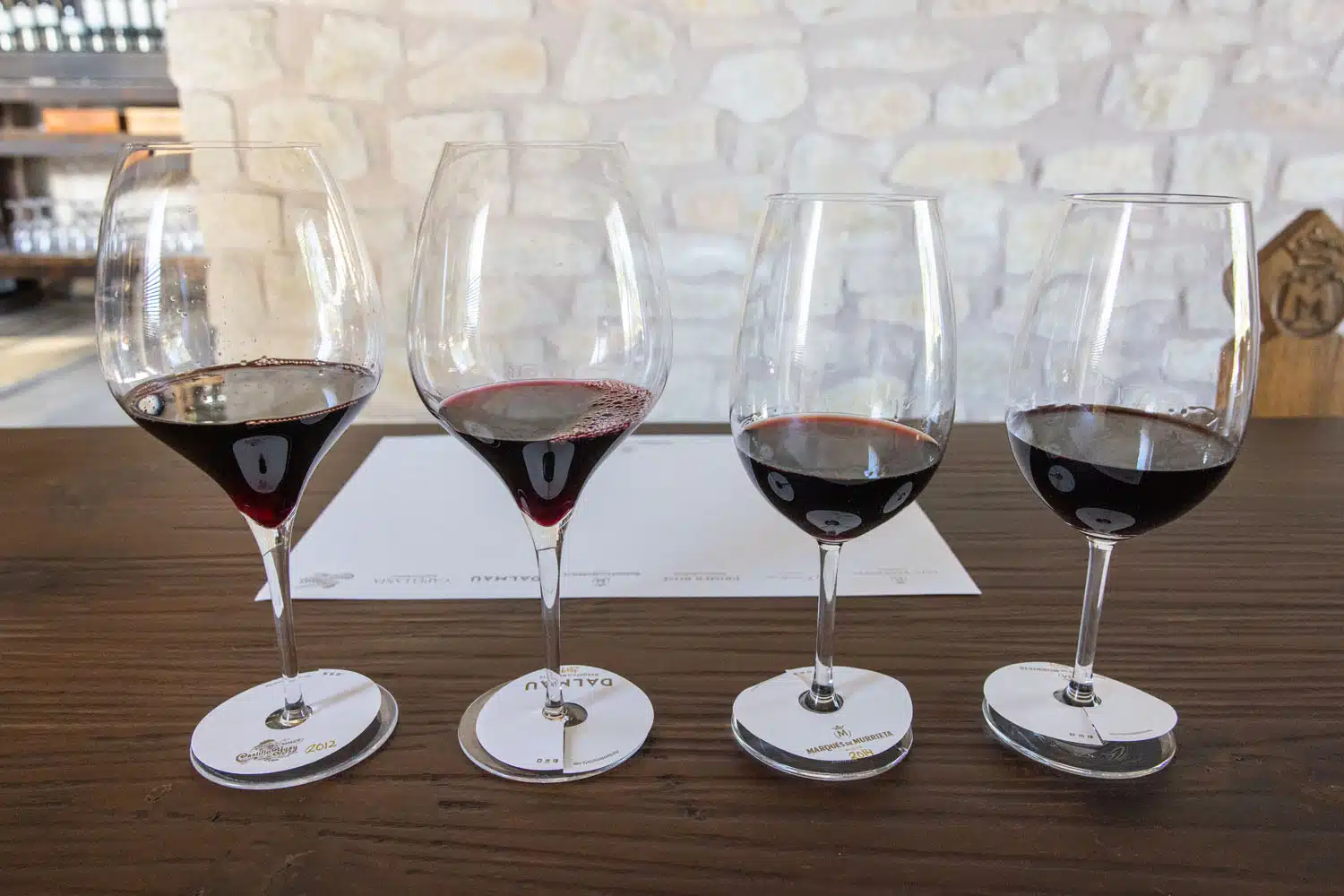
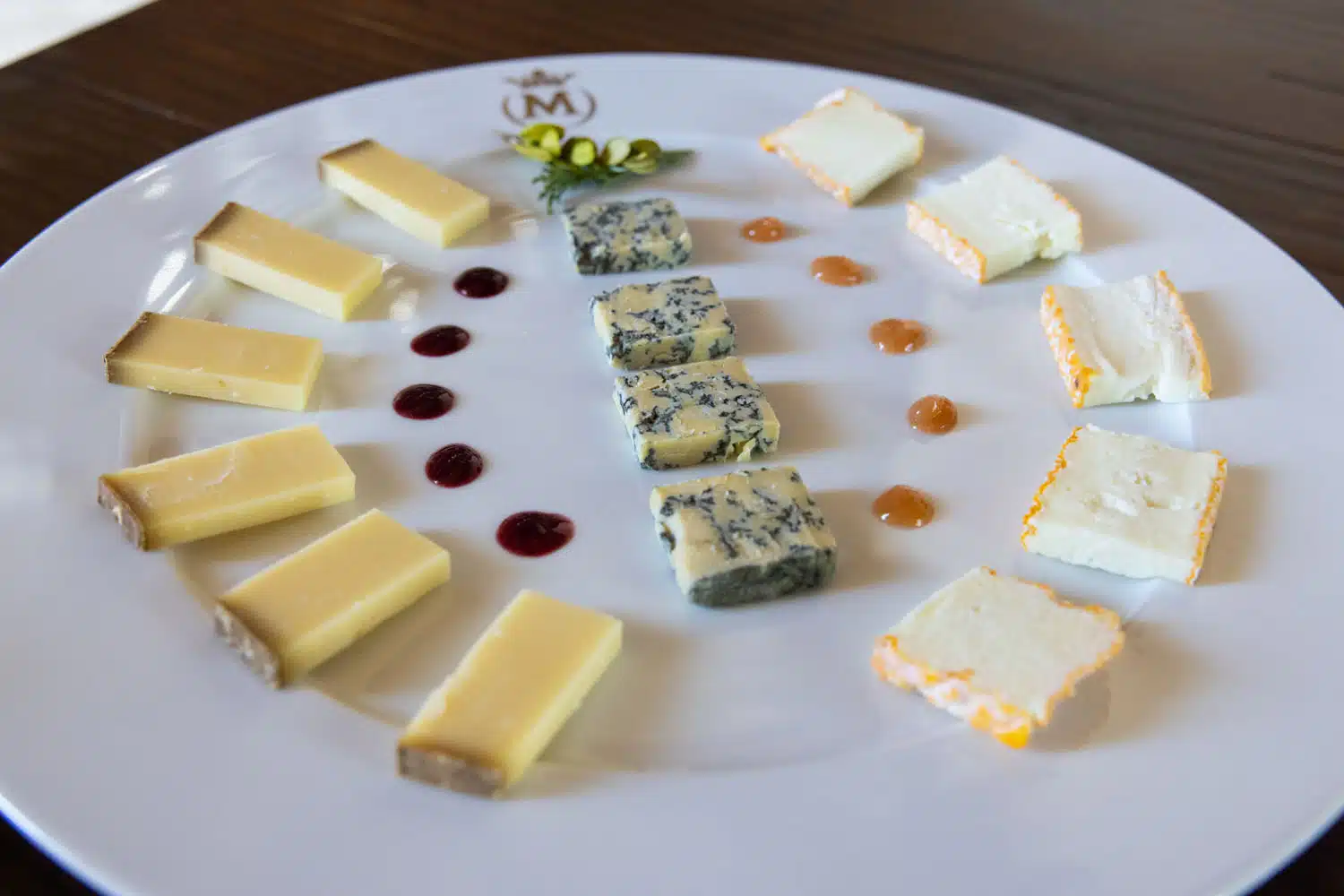
On our two visits here, we tasted everything they had, including the legendary Castillo Ygay. To do this, we made a reservation at the wine bar and added on a few tapas.
The food and the wine are extraordinary. Doing a wine tasting here and adding on tapas is right up there with dining in a Michelin starred restaurant. It was one of the pricier experiences we had in the Rioja wine region (a glass of Castillo Ygay 2012 cost €56), but it’s not often you get the opportunity to taste one of the best wines in the world.
We recommend making a reservation in advance, even if you just plan to do a tasting at the wine bar.
Which Wineries Should You Visit?
Now it is time to narrow down the long list of wineries in the Rioja wine region.
If you are a wine enthusiast or a foodie, put Marqués de Murrieta at the top of your list.
Touring an underground cellar is an essential experience in the Rioja wine region. Bodegas Conde de los Andes is our #1 pick, with its massive underground wine caves and huge collection of wine, plus the chance to walk in Ernest Hemingway’s footsteps. Bodegas Lecea is another great option, with its family history and traditional winemaking processes.
To visit one of the most creative, innovative wineries in the Rioja wine region, make a reservation at Bodegas Tritium. Taste some unique wines in their small, underground cellar.
If you only have one day in the Rioja wine region and want to quickly and easily visit a few wineries, pick three or four in Haro. We recommend Gómez Cruzado, La Rioja Alta, Muga, and taking a tour at CVNE.
When it comes to picking favorite wines, that can be a very individual experience.
Our favorites are Marqués de Murrieta, Bodegas Tritium, Bodegas Solar de Samaniego, and Bodegas Gómez Cruzado.
Our 5 Favorite Experiences in the Rioja Wine Region
- Tasting the Castillo Ygay 2012 and dining on tapas at Marqués de Murrieta.
- Tasting the innovative, creative wines at Bodegas Tritium.
- Touring the underground cellars at Condes de los Andes.
- Taking a tour at Bodegas Lecea. This small, family run winery is a delight to visit.
- We loved the wines, the olive oil, and the laid-back atmosphere at Bodegas Gómez Cruzado.
Interesting Facts about the Wine from the Rioja Wine Region
About 90% of the wine produced in Rioja is red wine.
The main grape is tempranillo, which has become synonymous with Rioja wine. Showing up in smaller quantities are Garnacha, Graciano, Mazuelo, and Maturana Tinta.
The Rioja wine region is classified as DOCa, “Qualified Designation of Origin,” which is the highest category of regulation. There is a color-coded labeling system established by the Rioja DOC Board that identifies the wines made in Rioja as either a Crianza, Reserva, or Gran Reserva. To get this colored label, the wine must meet very strict criteria.
Below are the qualifications for red wines in Rioja.
CRIANZA (RED LABEL): Must be aged for at least two years and one of these must be in oak barrels. These tend to be fruity, easy drinking wines.
RESERVA (BURGUNDY LABEL): Must be aged for at least three years and one of these must be in oak barrels. They tend to only be made in exceptional years.
GRAN RESERVA (BLUE LABEL): Must be aged for at least five years, two of which must be in oak barrels and the remaining three in bottles. These are only made in exceptional years (as qualified by the DOC board) and make up less than 10% of the wine produced in Rioja.
GREEN LABEL: The green label either signifies a young, fruity wine or a wine that does not follow the traditional winemaking process. It does not mean that the wine is not a good wine or a young wine, it just indicates that the wine was made without following all of the rules.
In the Rioja wine region, some winemakers strive to produce the traditional wines, earning the red, burgundy, and blue labels but there is a growing movement to produce some non-traditional wines, which earn the green label. When touring the Rioja wine region, it is worth touring both the traditional and non-traditional wineries, to get a taste of both of them.
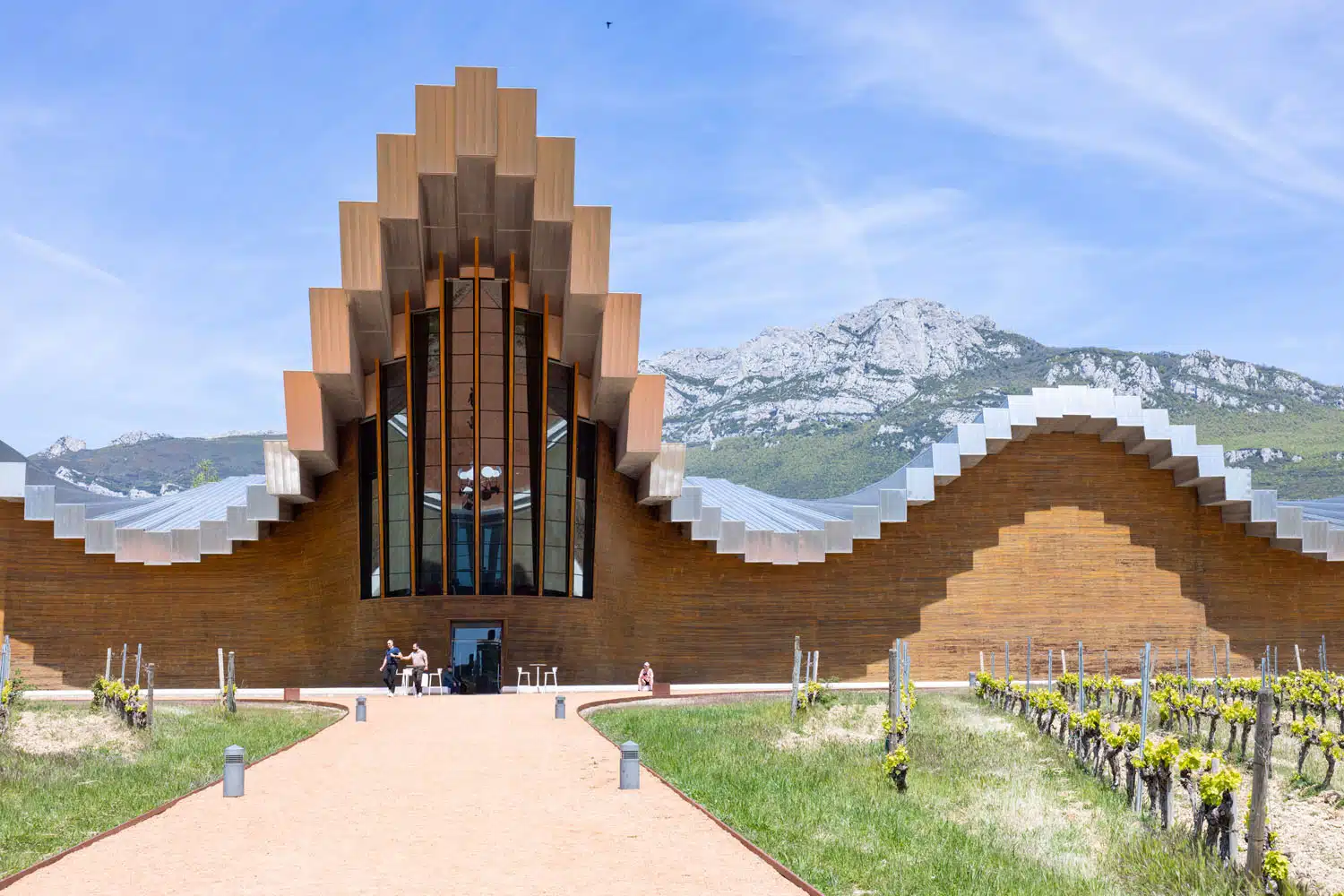
Ysios Winery
How to Plan a Trip to Rioja, Spain
There is more to do in Rioja than just visit the wineries. There are small towns to visit, tapas restaurants to try, plus a few monasteries to visit, if you want to more than taste wine all day.
Here are the best things to do in La Rioja other than visiting wineries, plus a Rioja wine region itinerary.
Visit More Wine Regions Around the World
FRANCE: Spend 3 days on the Alsace Wine Route, visiting small towns like Colmar, Eguisheim, and Ribeauville.
FRANCE: Spend 10 days in the French Riviera and Provence.
ITALY: Go wine tasting in the hill towns of Tuscany – get the full list of things to do in our Tuscany Bucket List. In Sicily, visit the vineyards on the slopes of Mount Etna in the Etna Wine Region.
PORTUGAL: Visit the best wineries in the Douro Valley and plan your Douro Valley day trip from Porto.
AUSTRALIA: Go wine tasting in Barossa Valley and McLaren Vale.
NEW ZEALAND: Visit New Zealand’s largest wine region, the Marlborough Wine Region on the South Island.
CHILE: Visit the wine regions around Santiago, Chile.
ARGENTINA: Explore the wine regions in Mendoza, Argentina.
If you have any questions about the best wineries in the Rioja wine region or if you want to share your favorites, let us know in the comment section below.
More Information for Your Trip to Spain
We have TONS more information about Spain in our Spain Travel Guide, including Barcelona, Madrid, Seville, Andalusia, and the Rioja Wine Region.

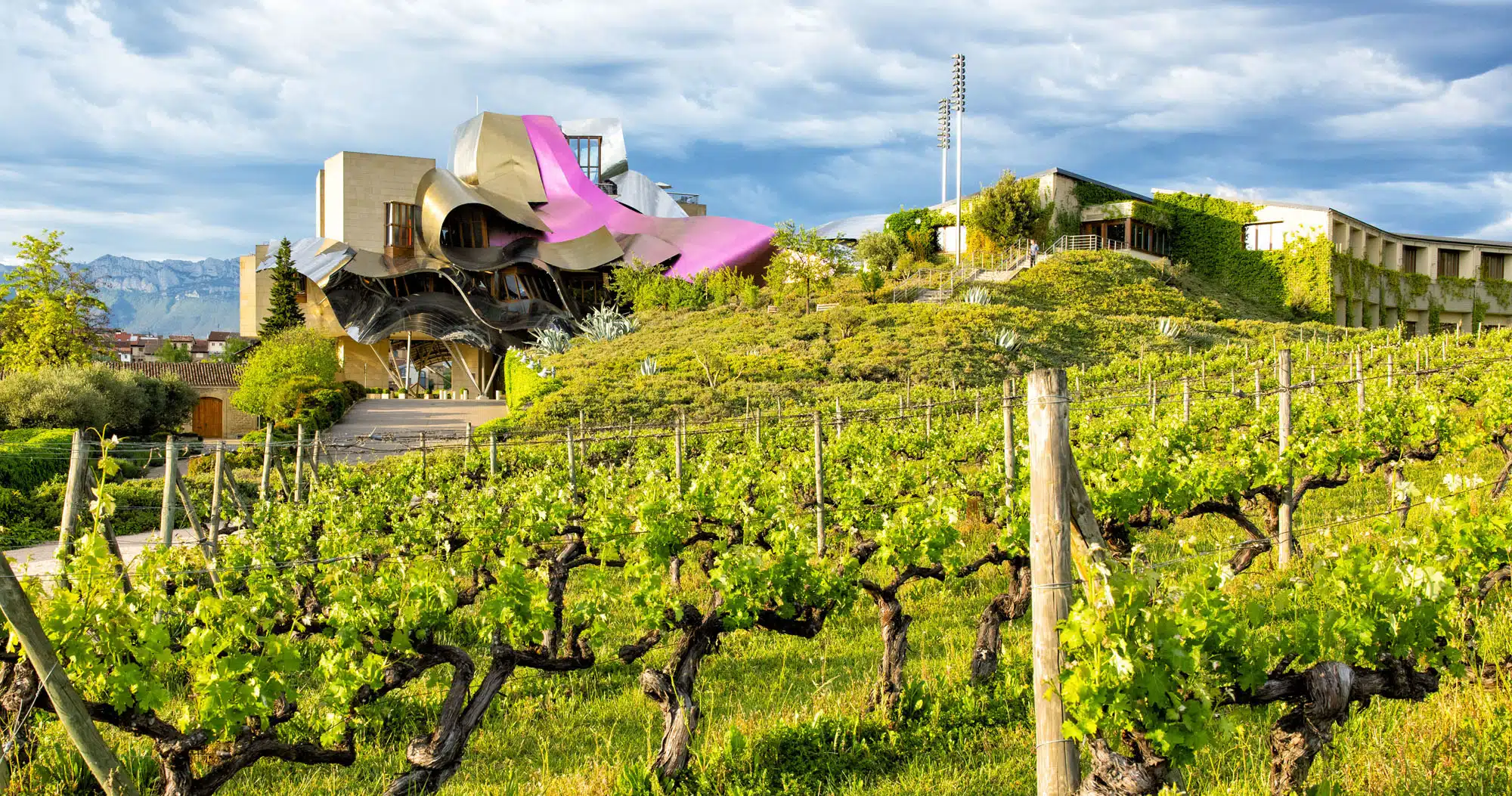

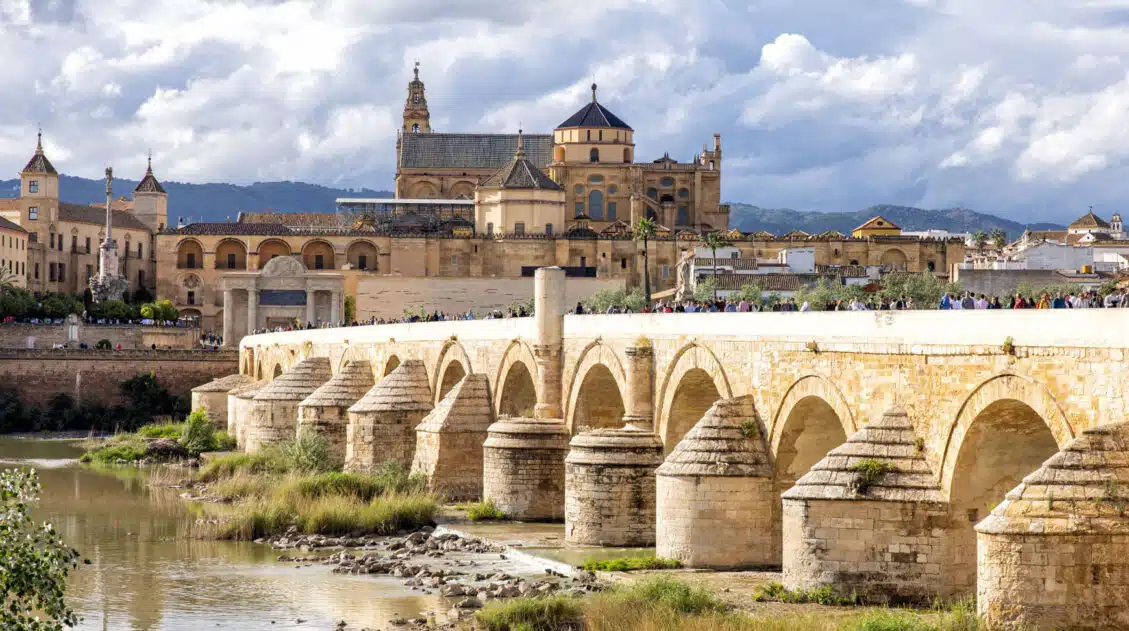
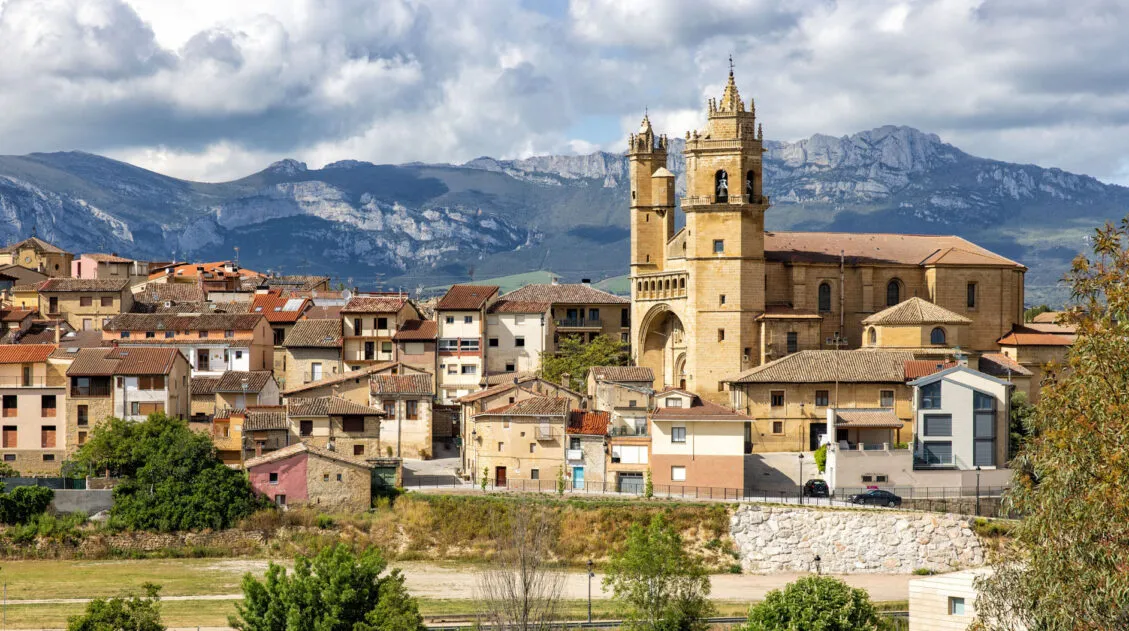
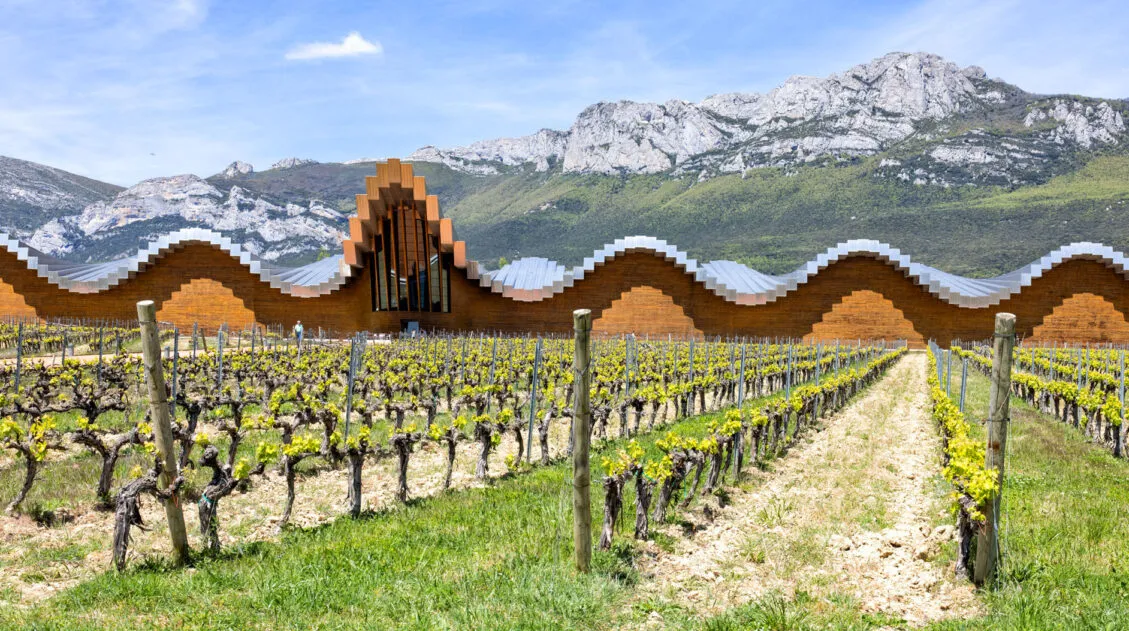
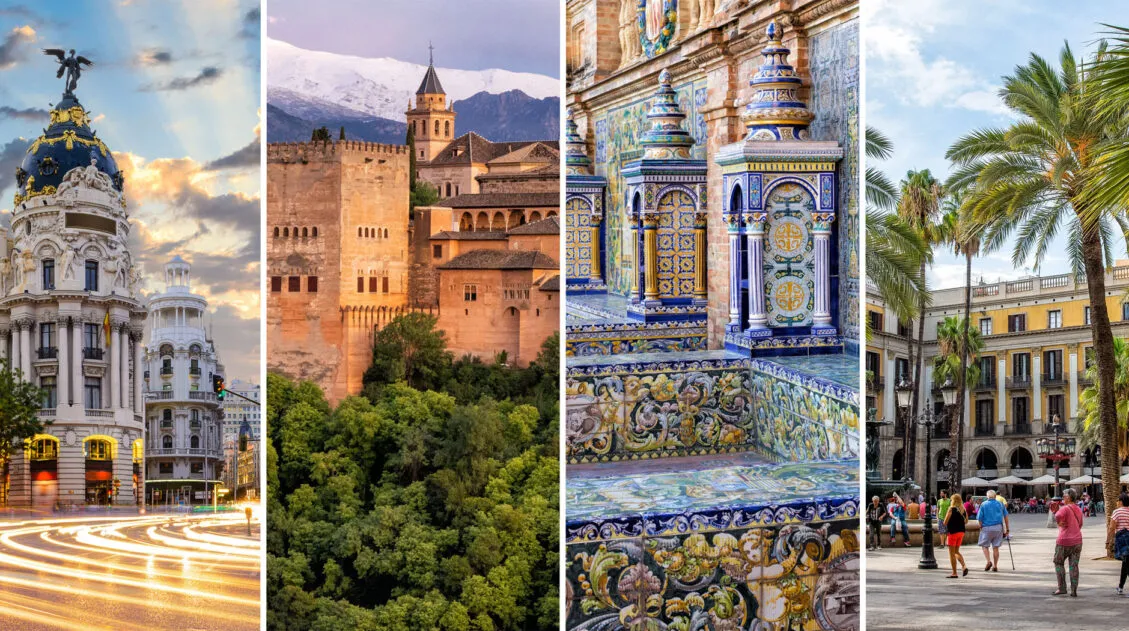
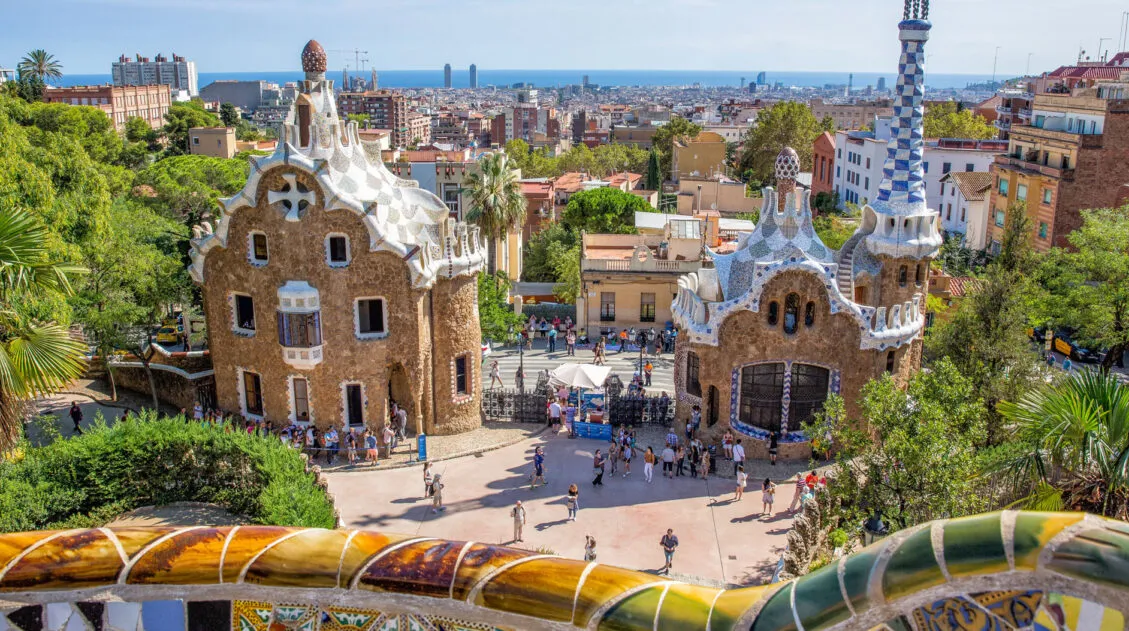
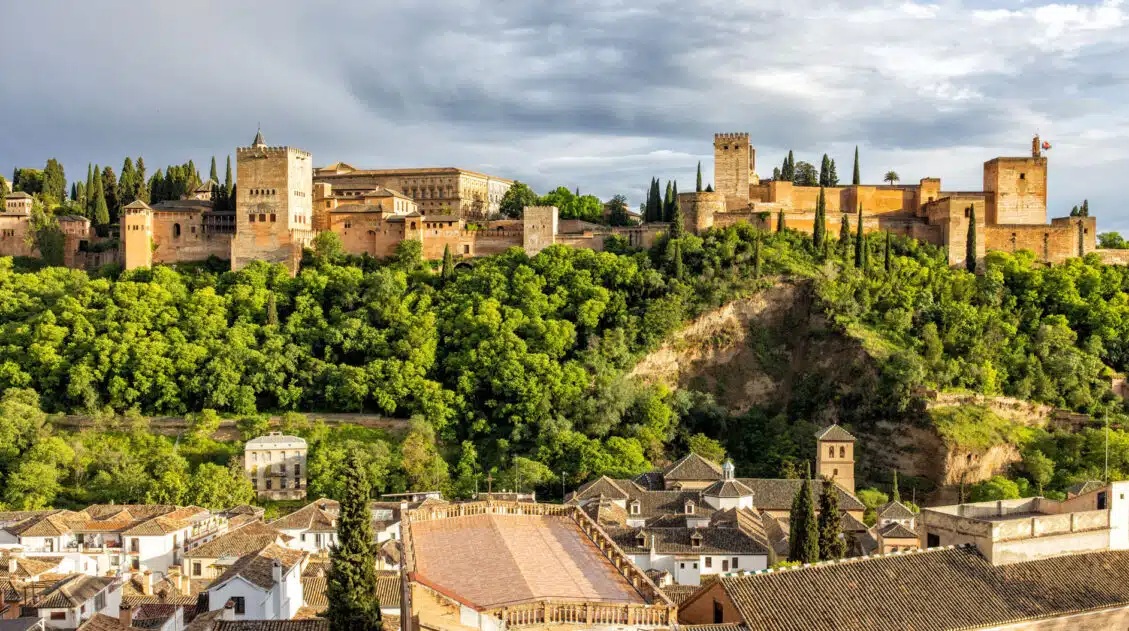
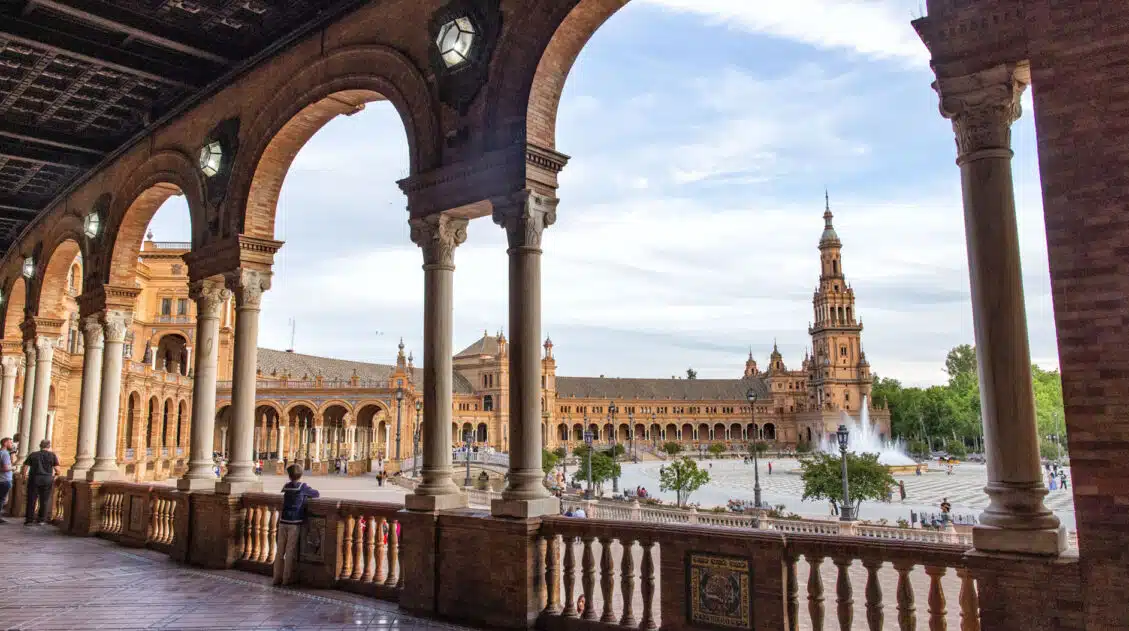
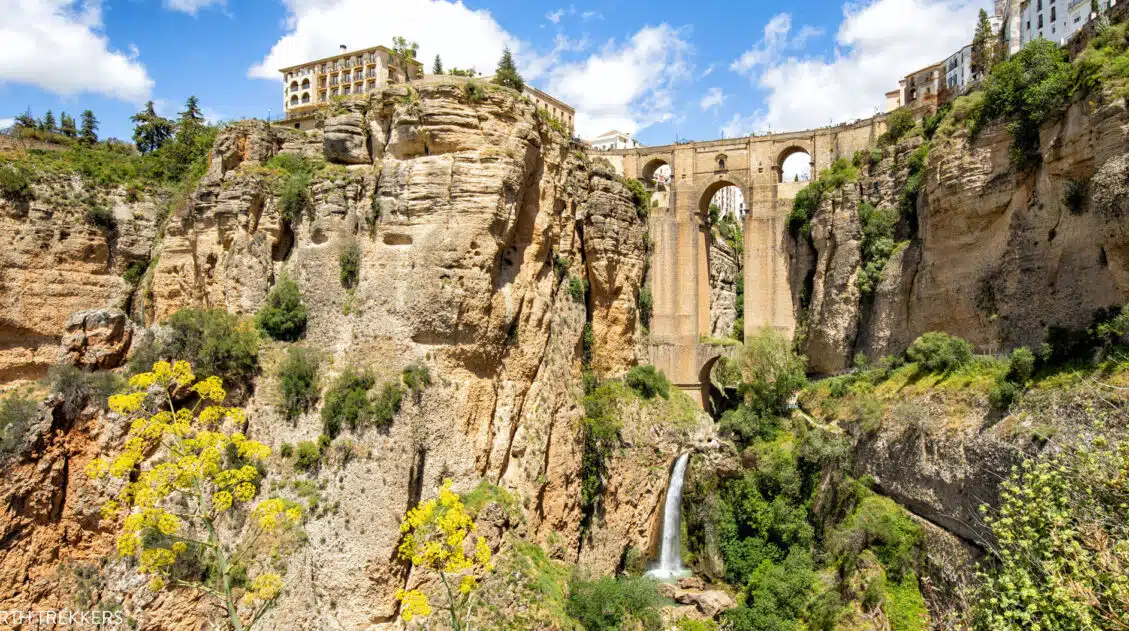
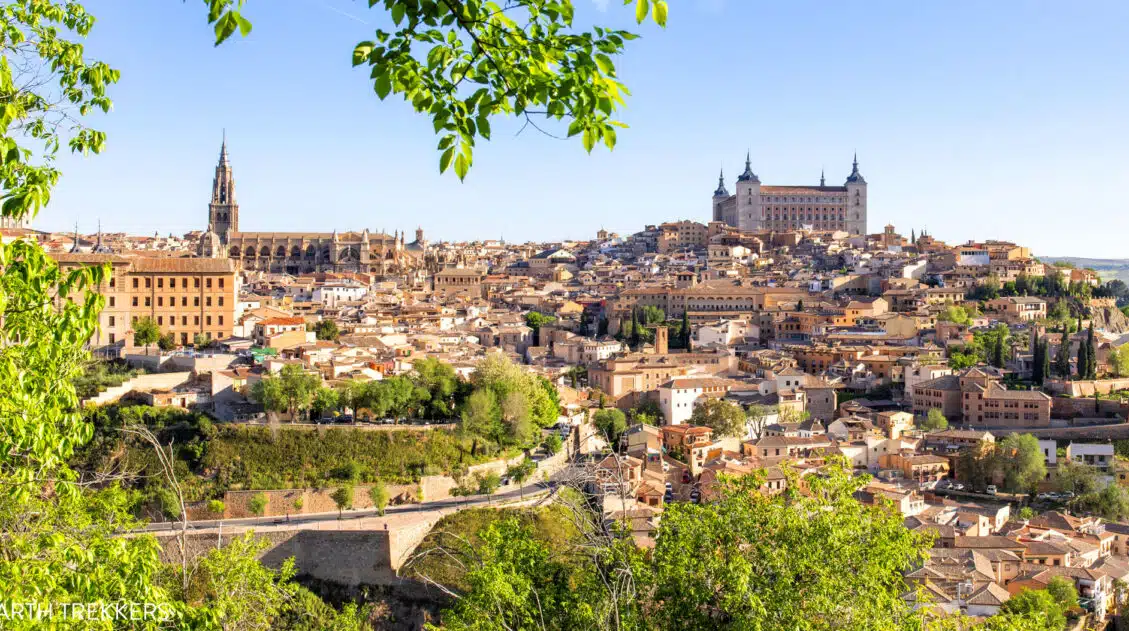
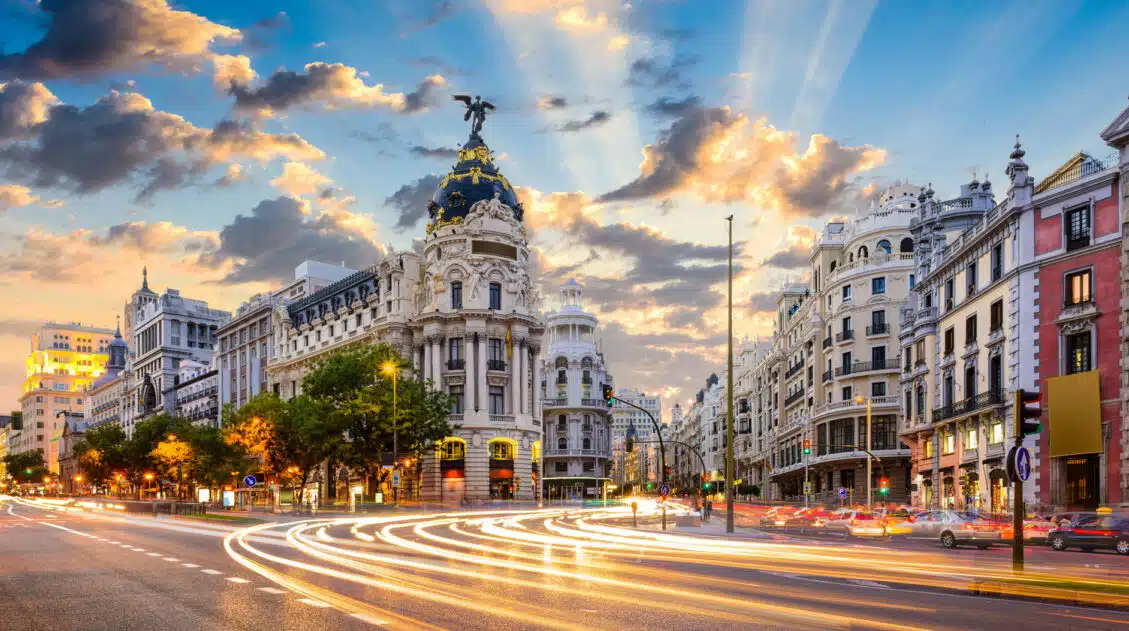
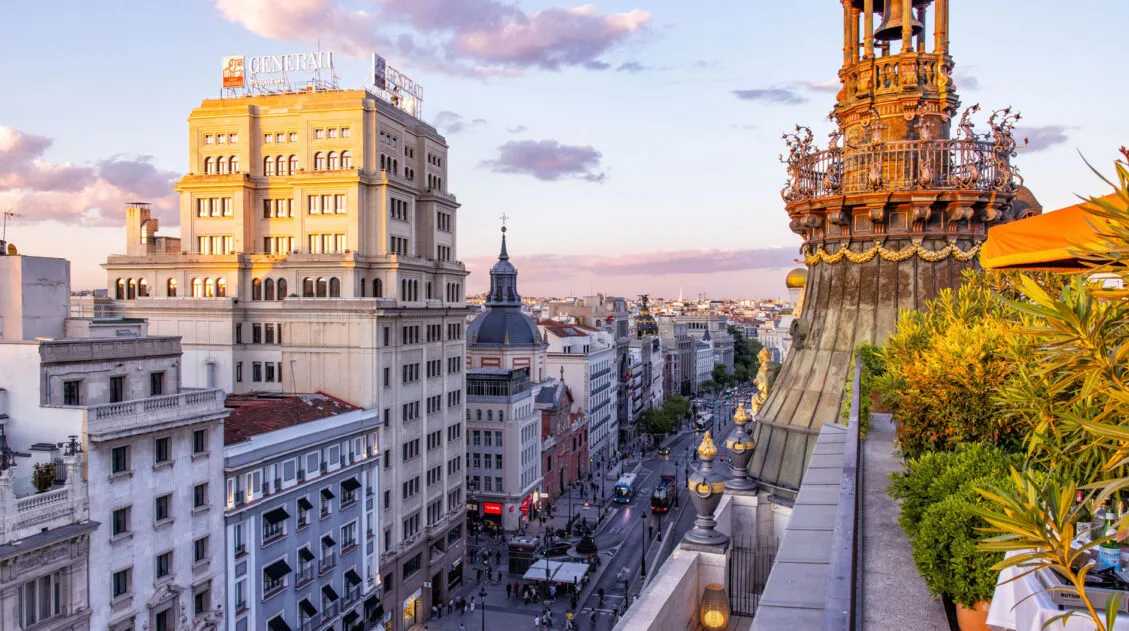
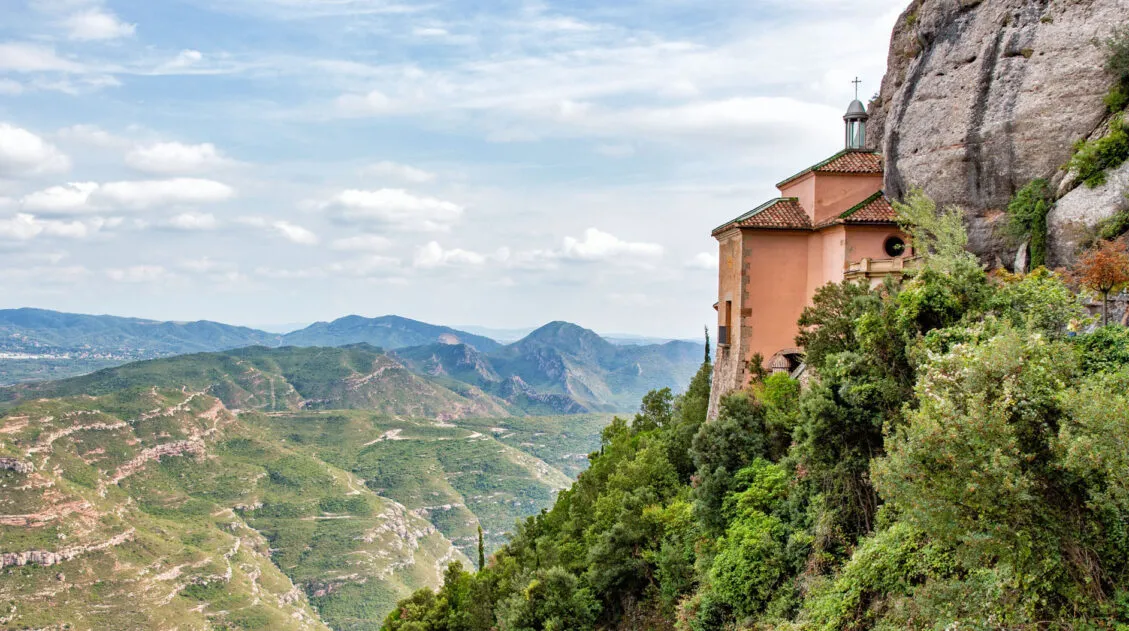
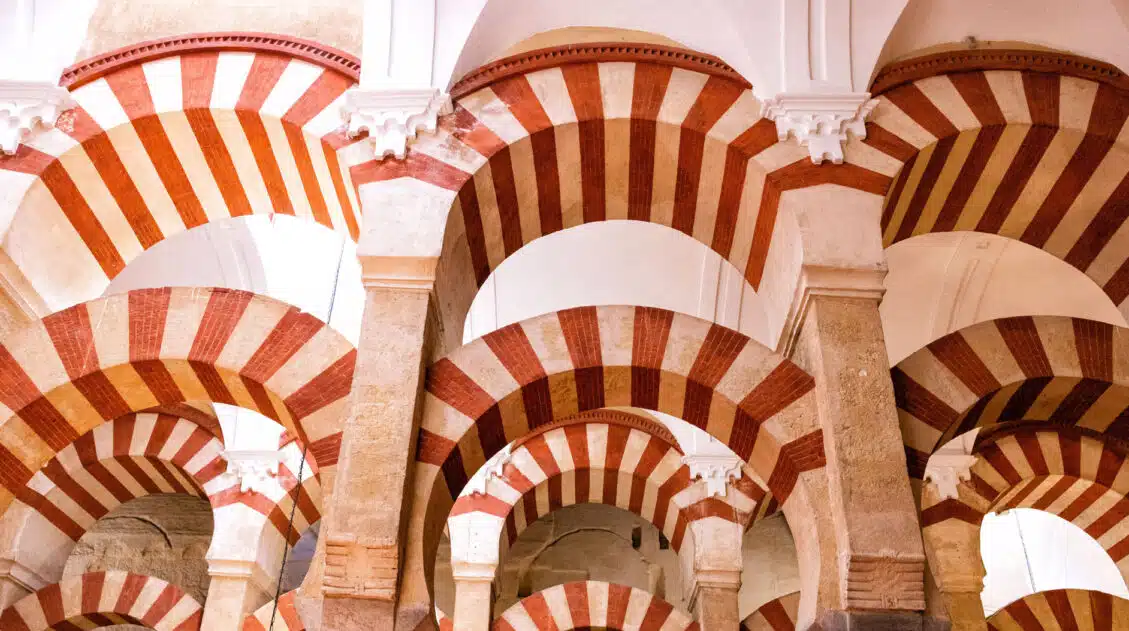
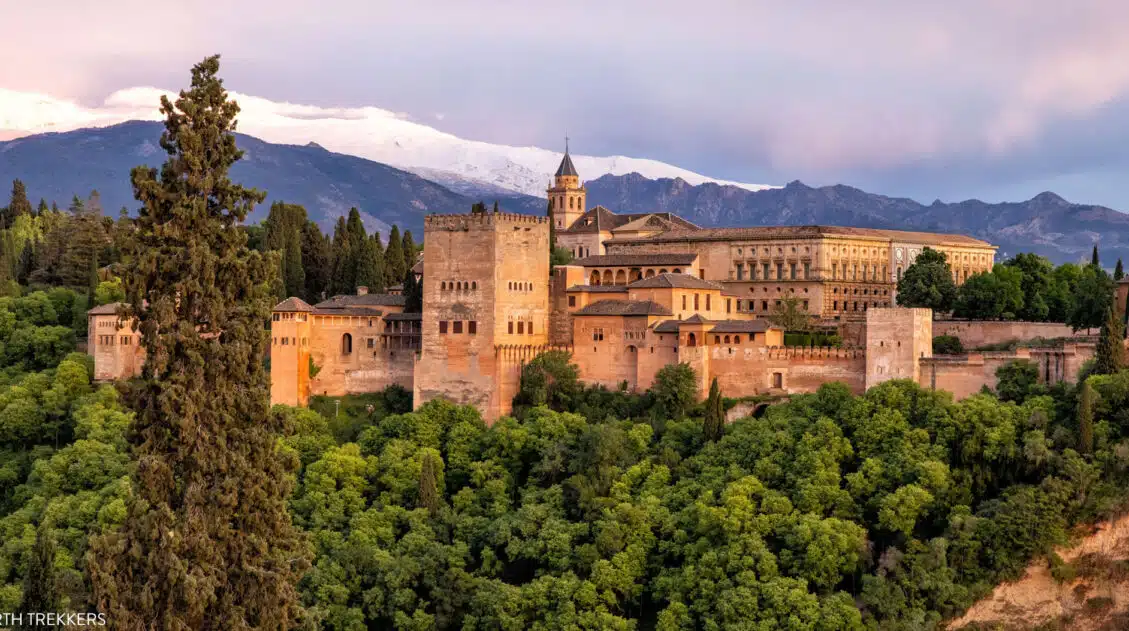
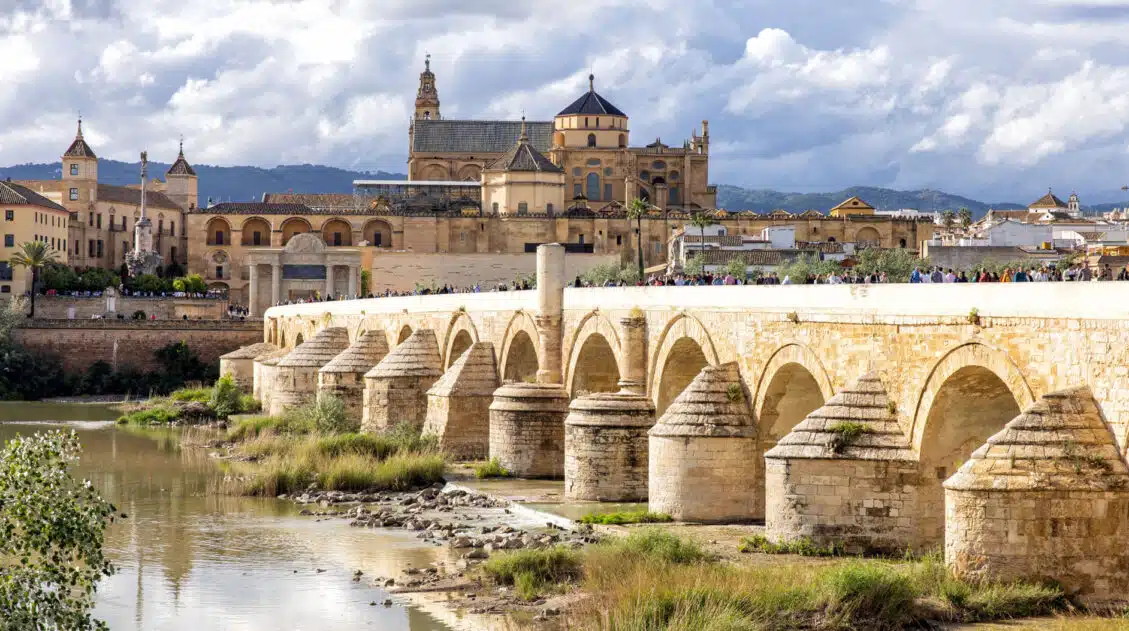
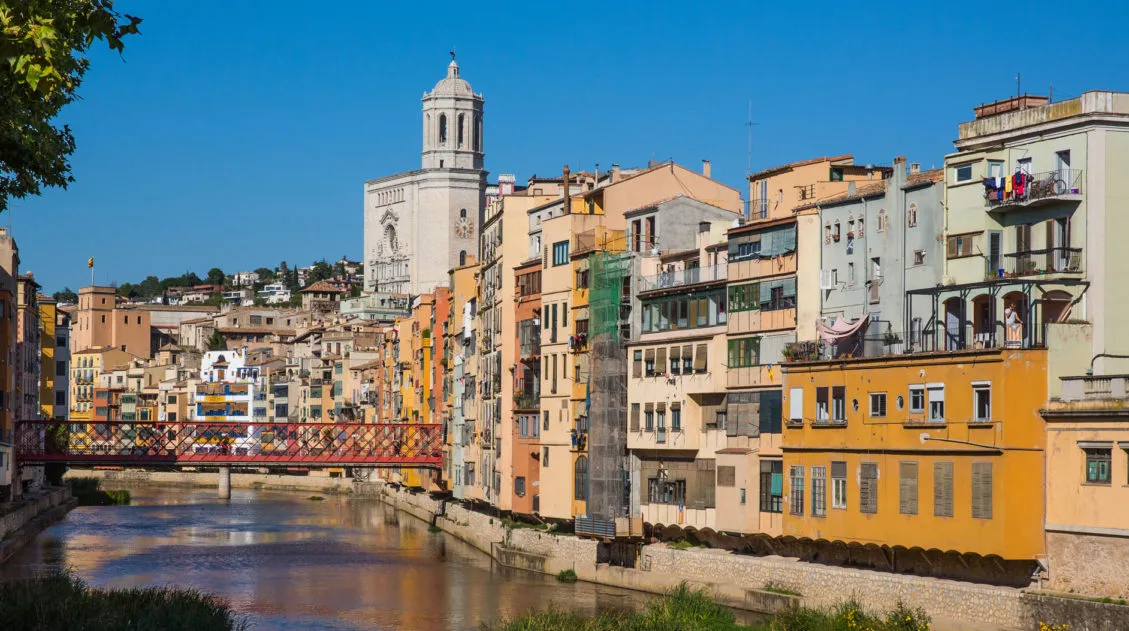
Comments 4